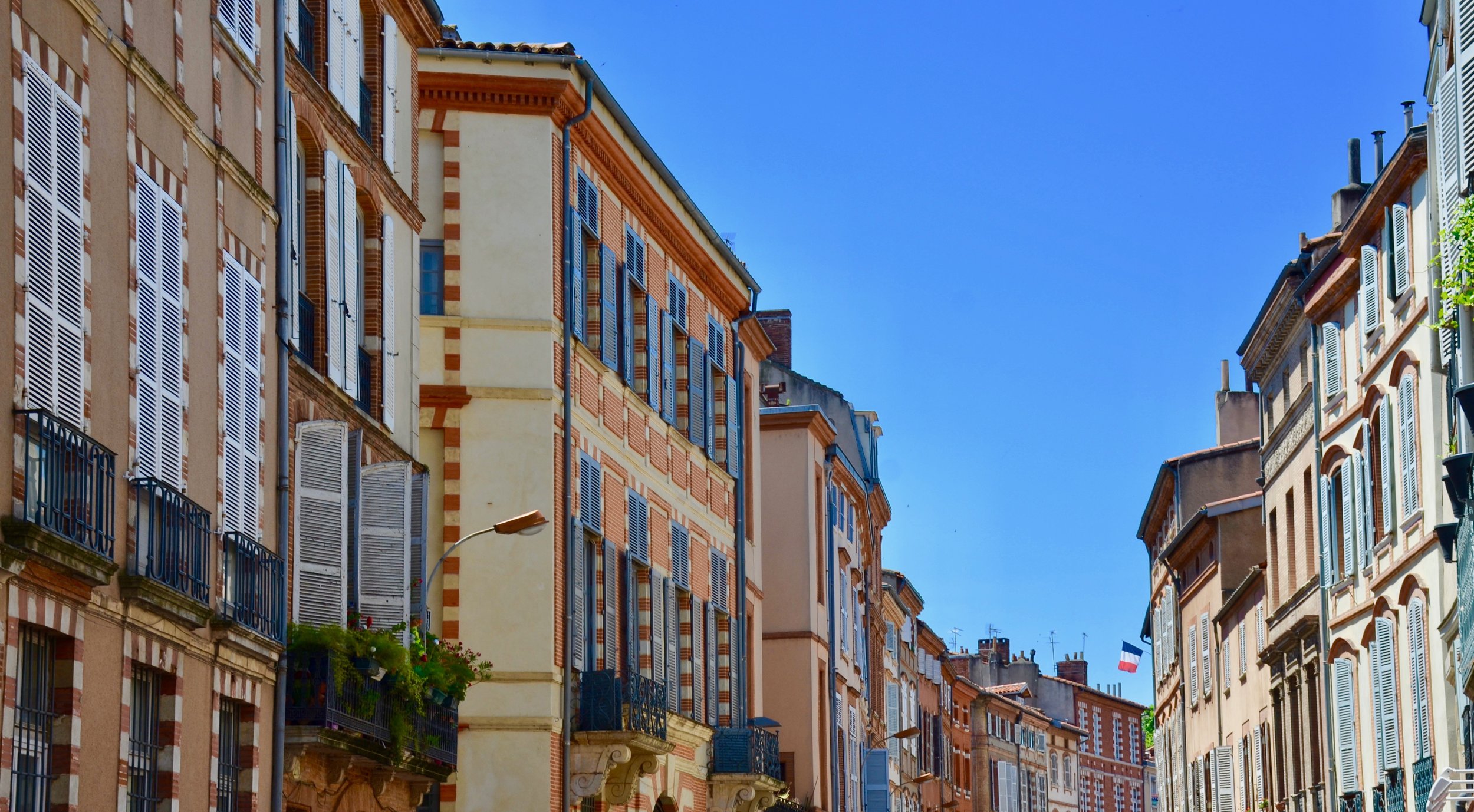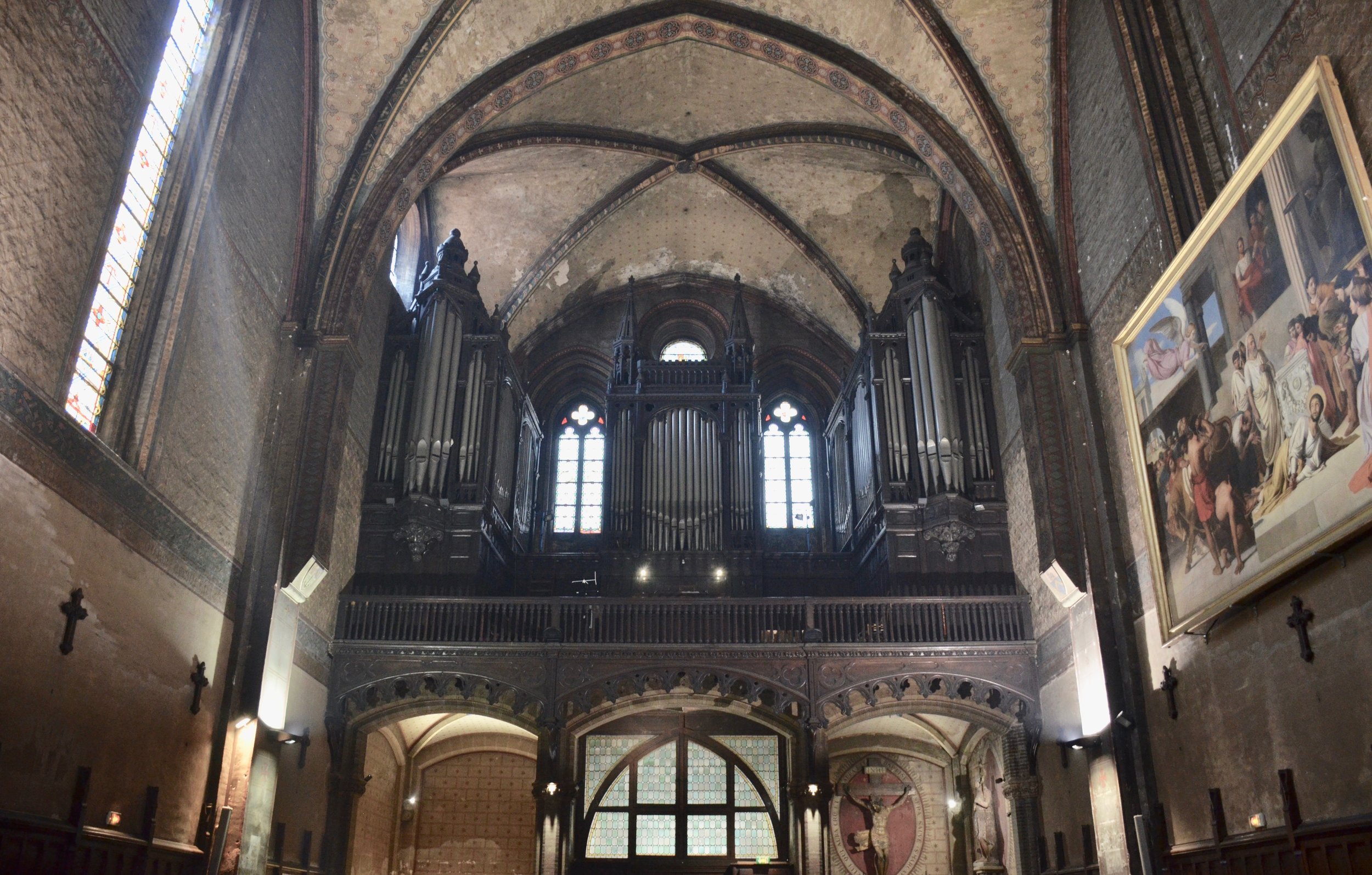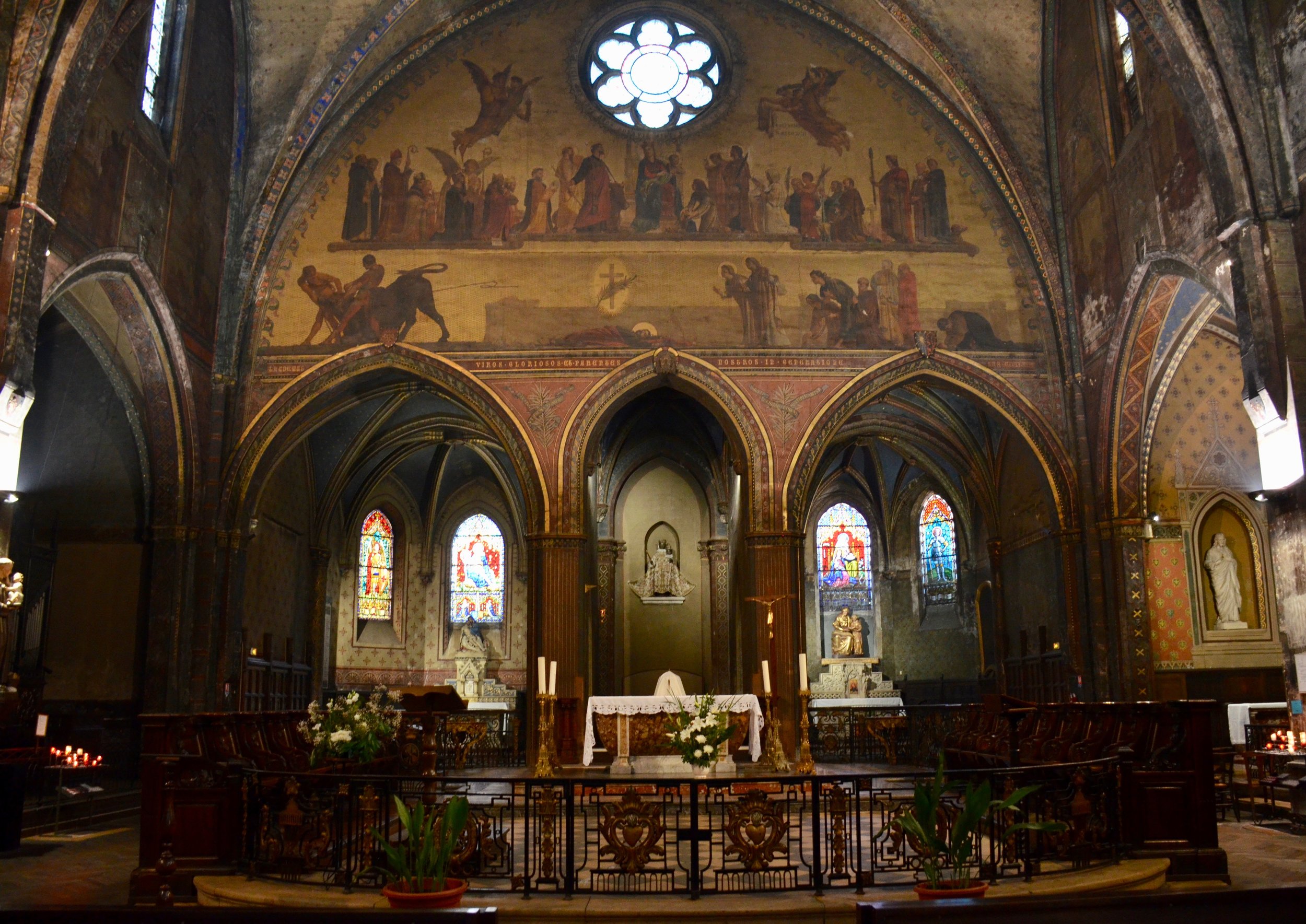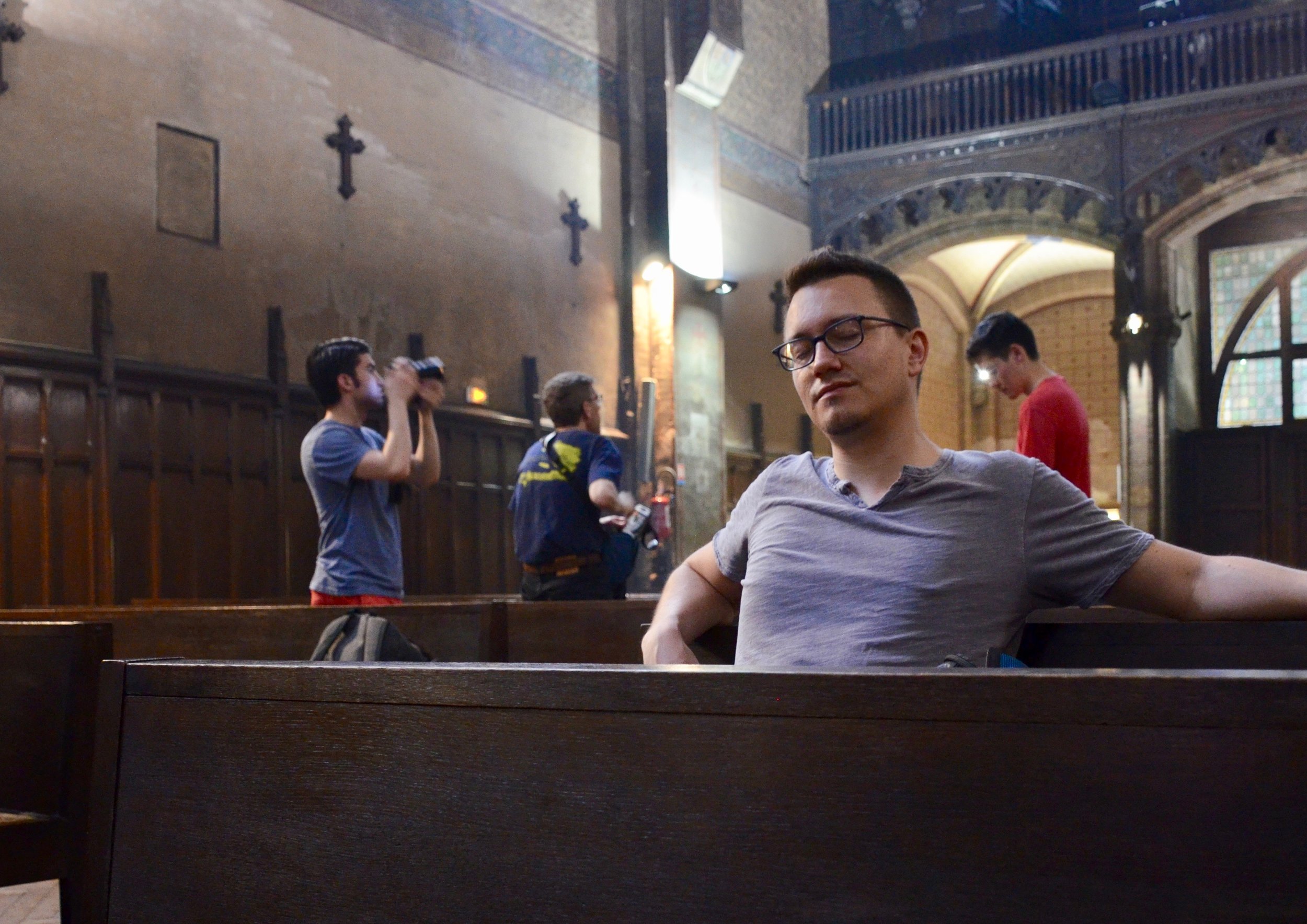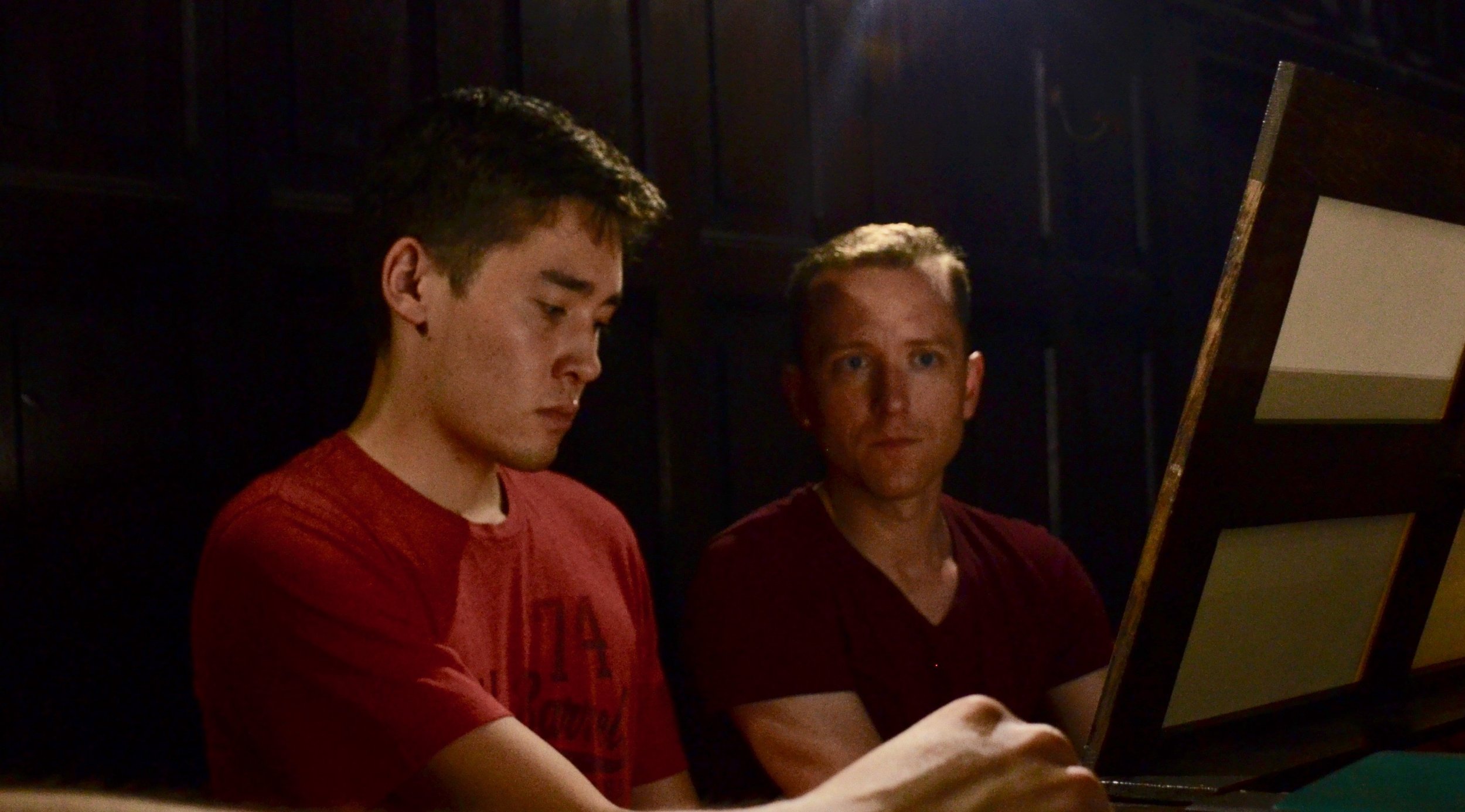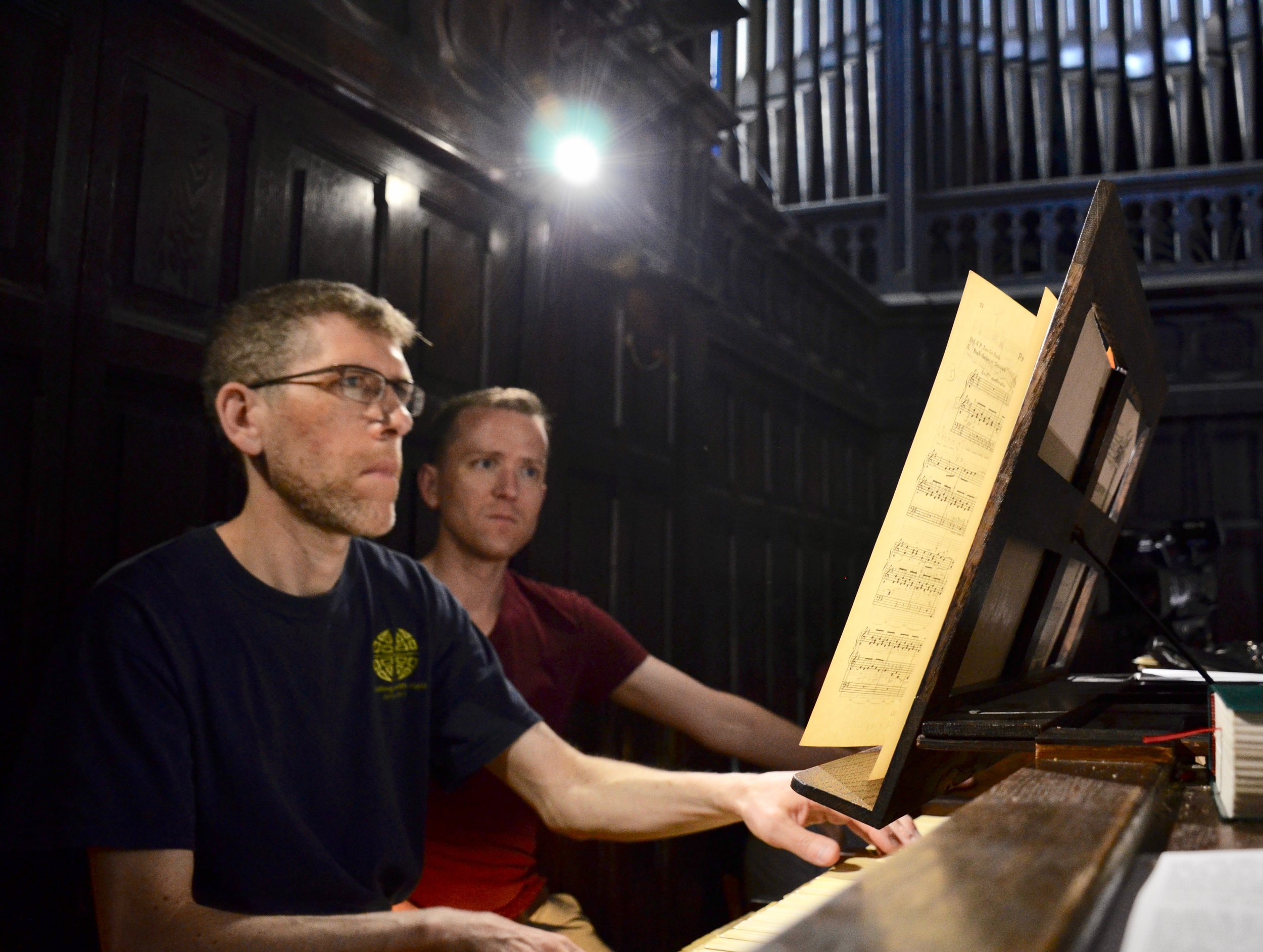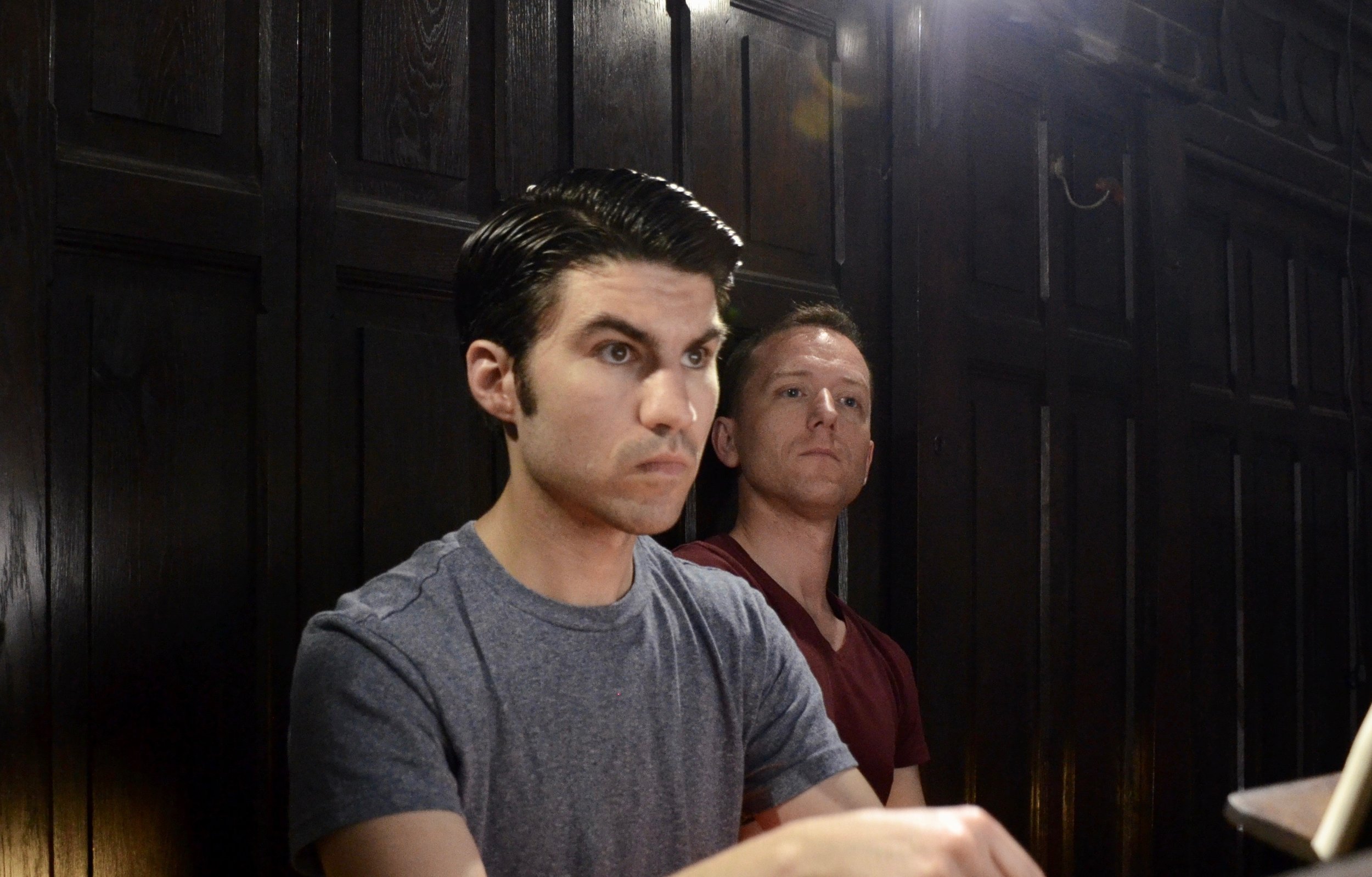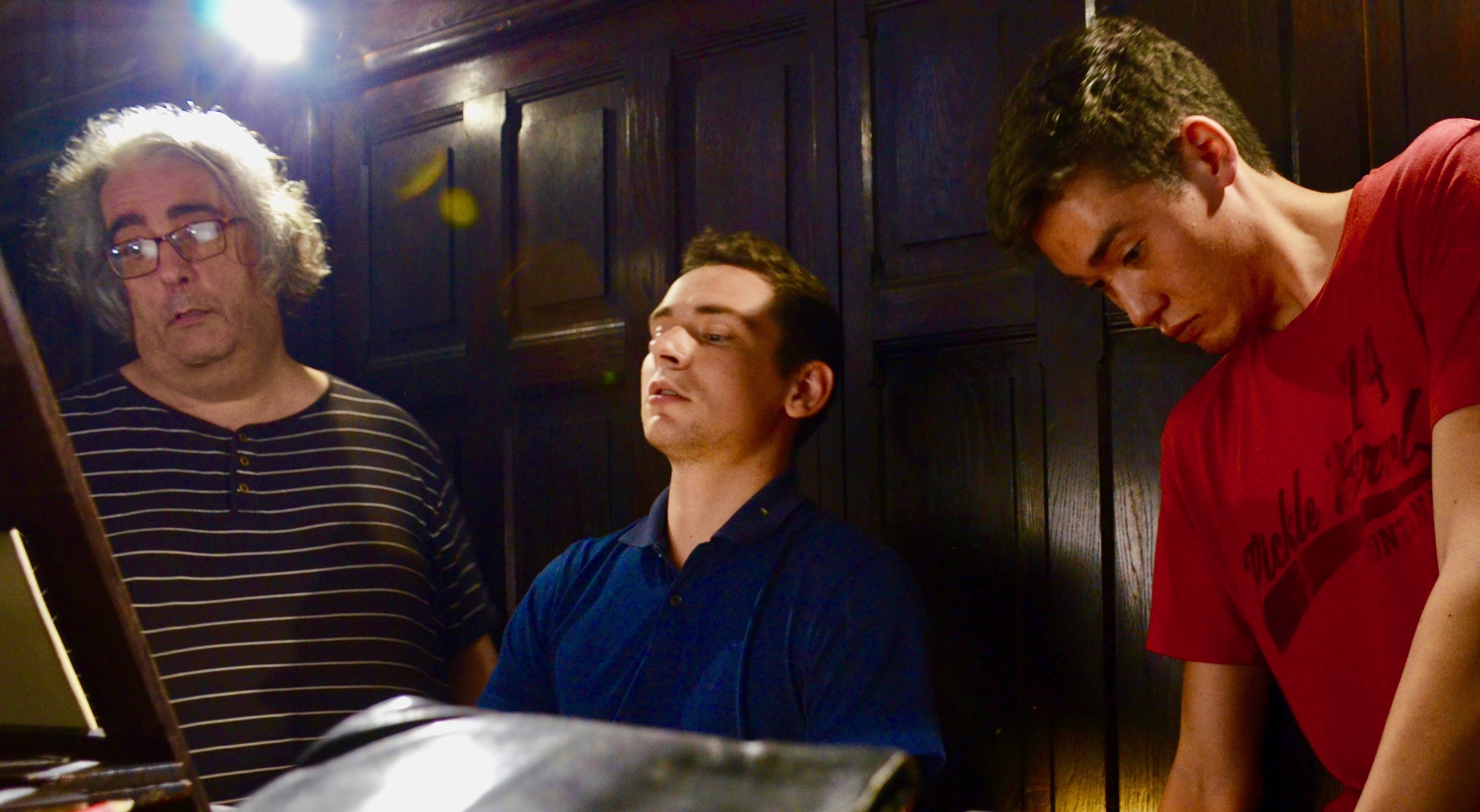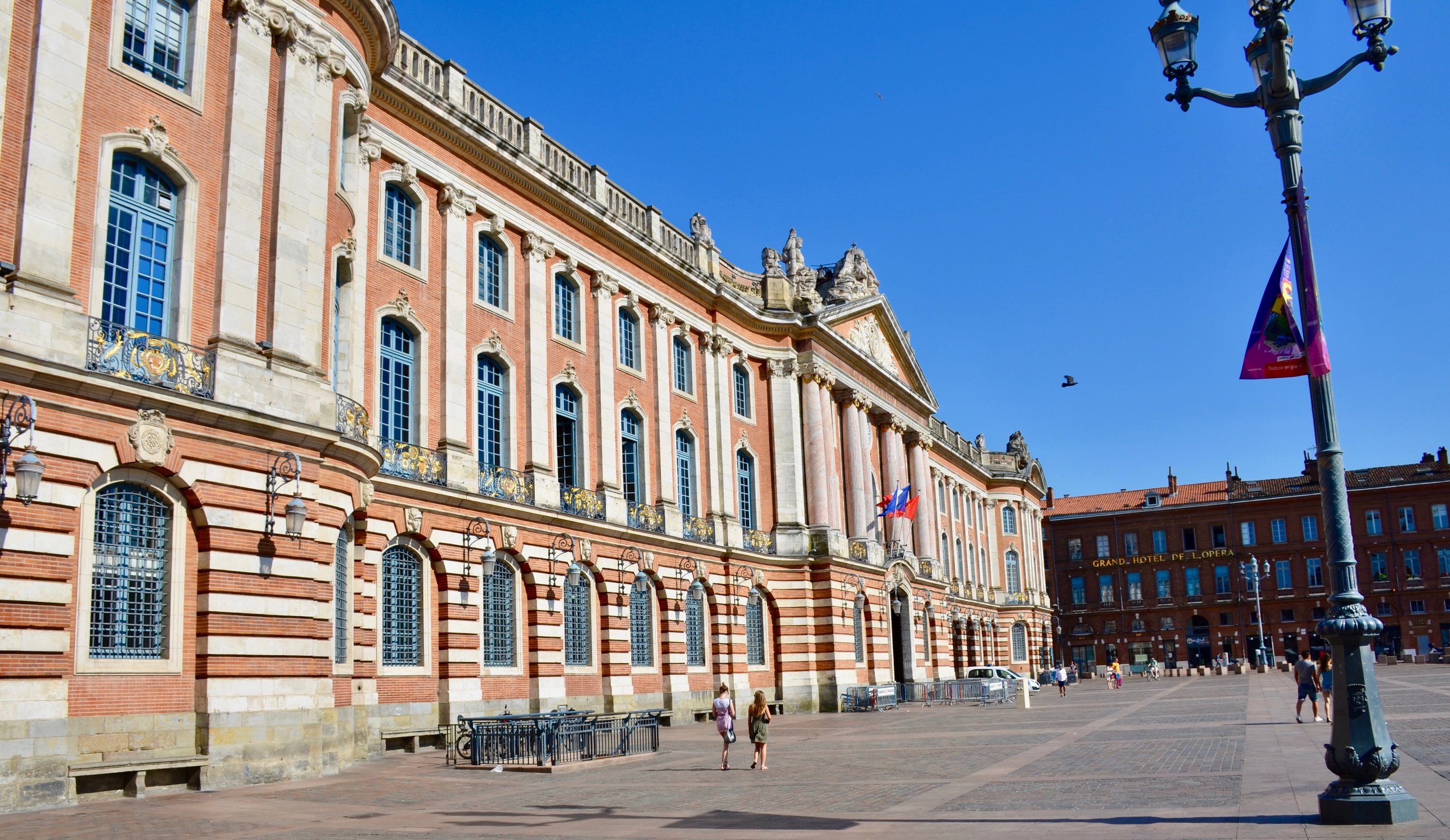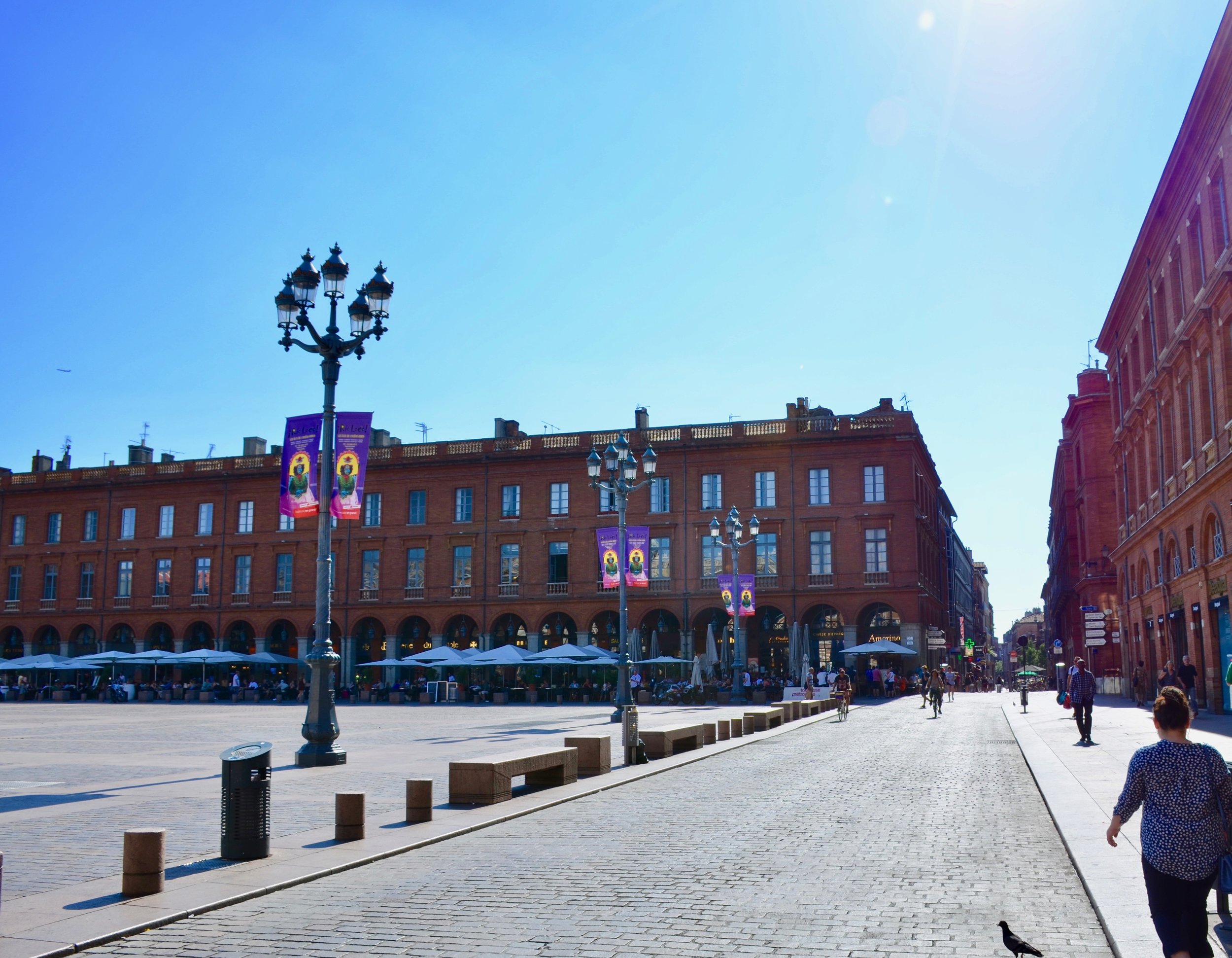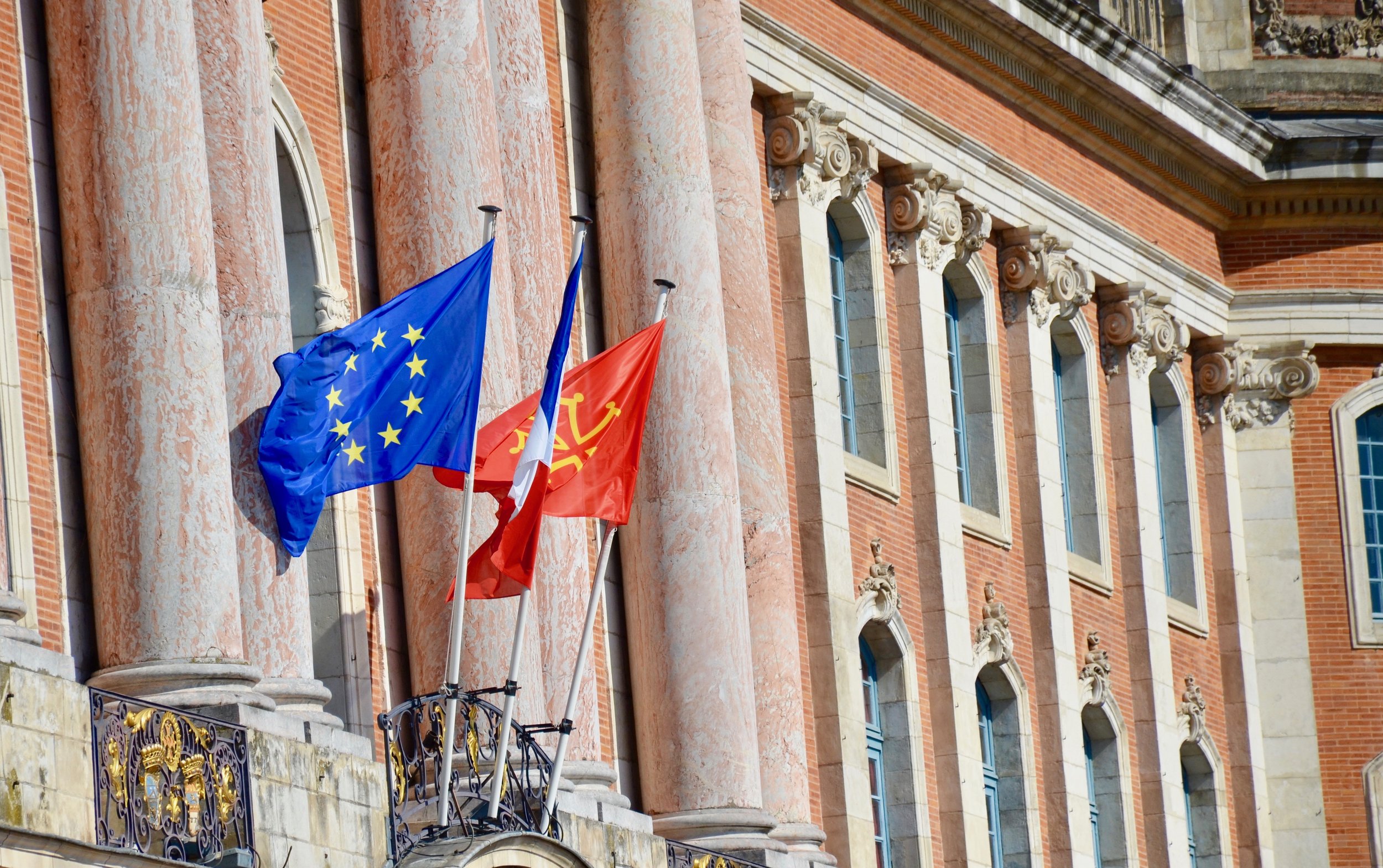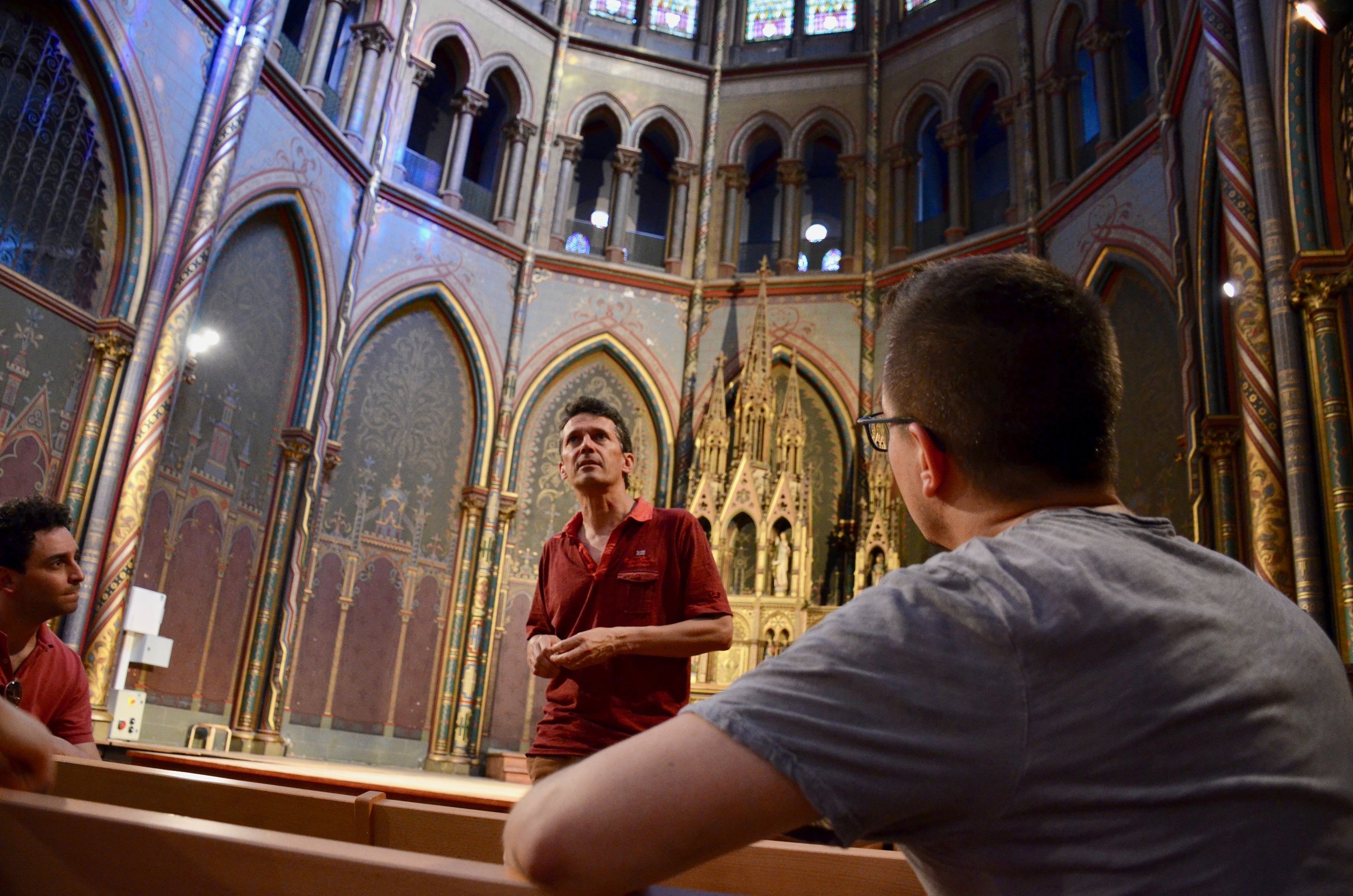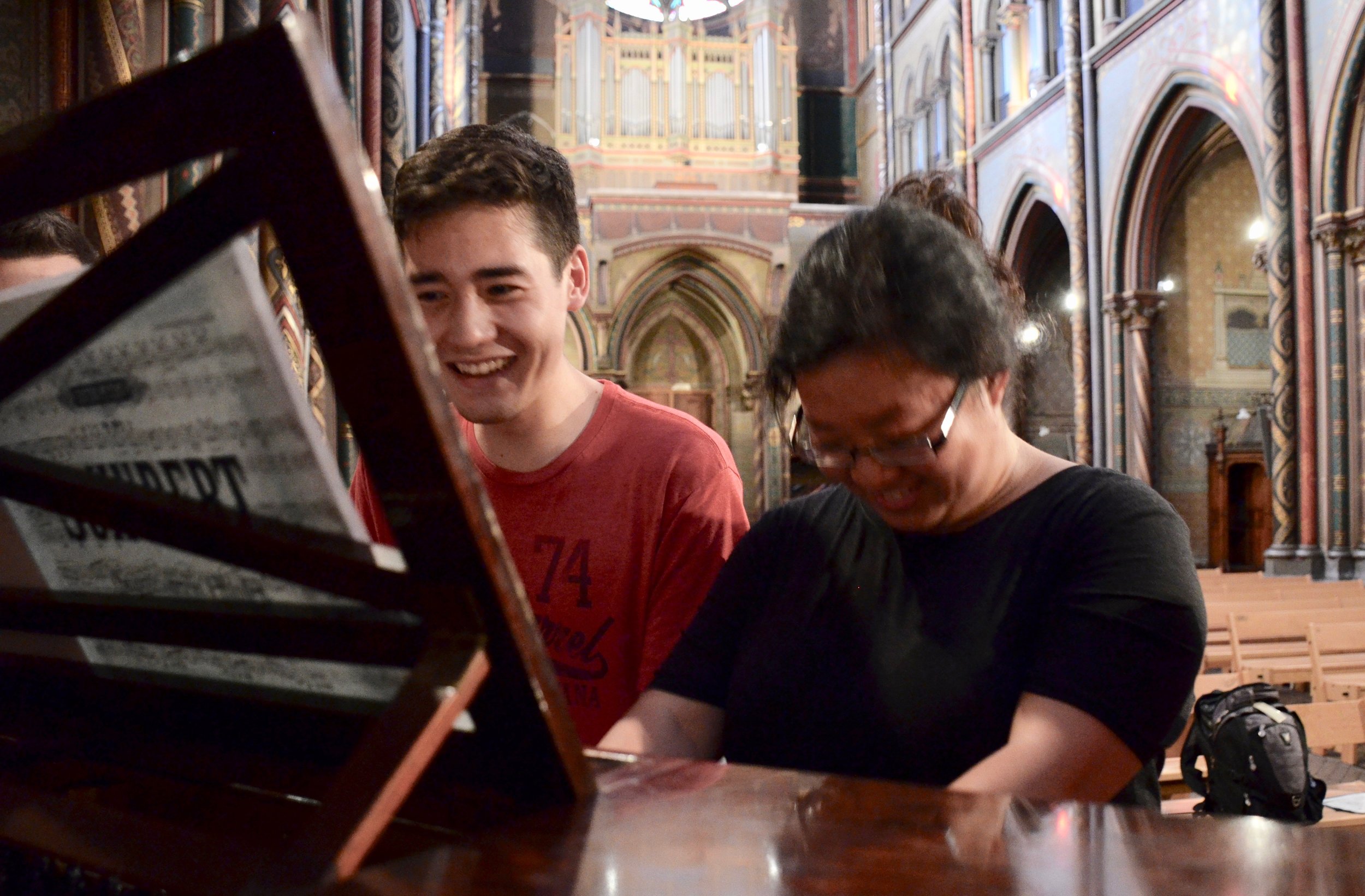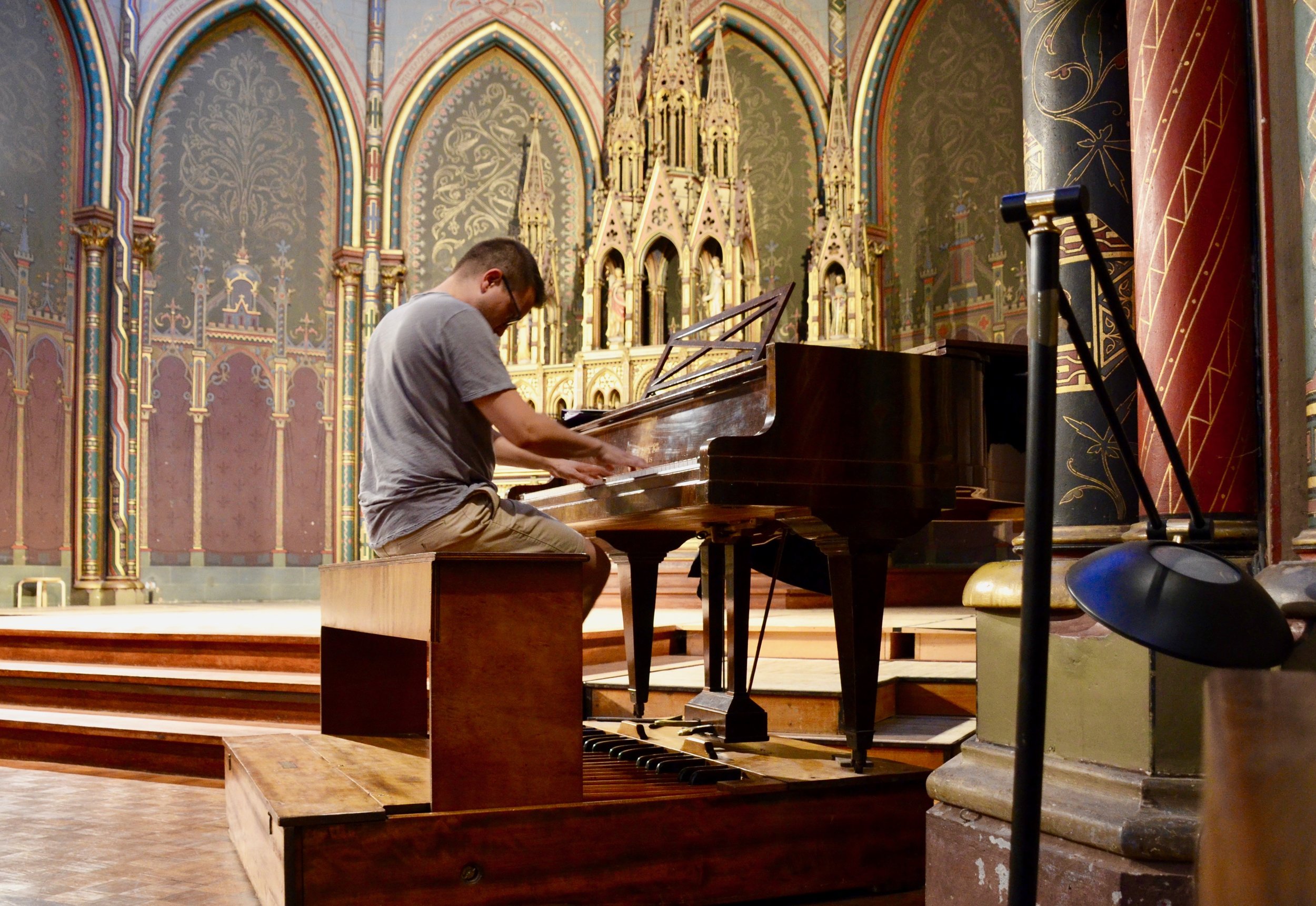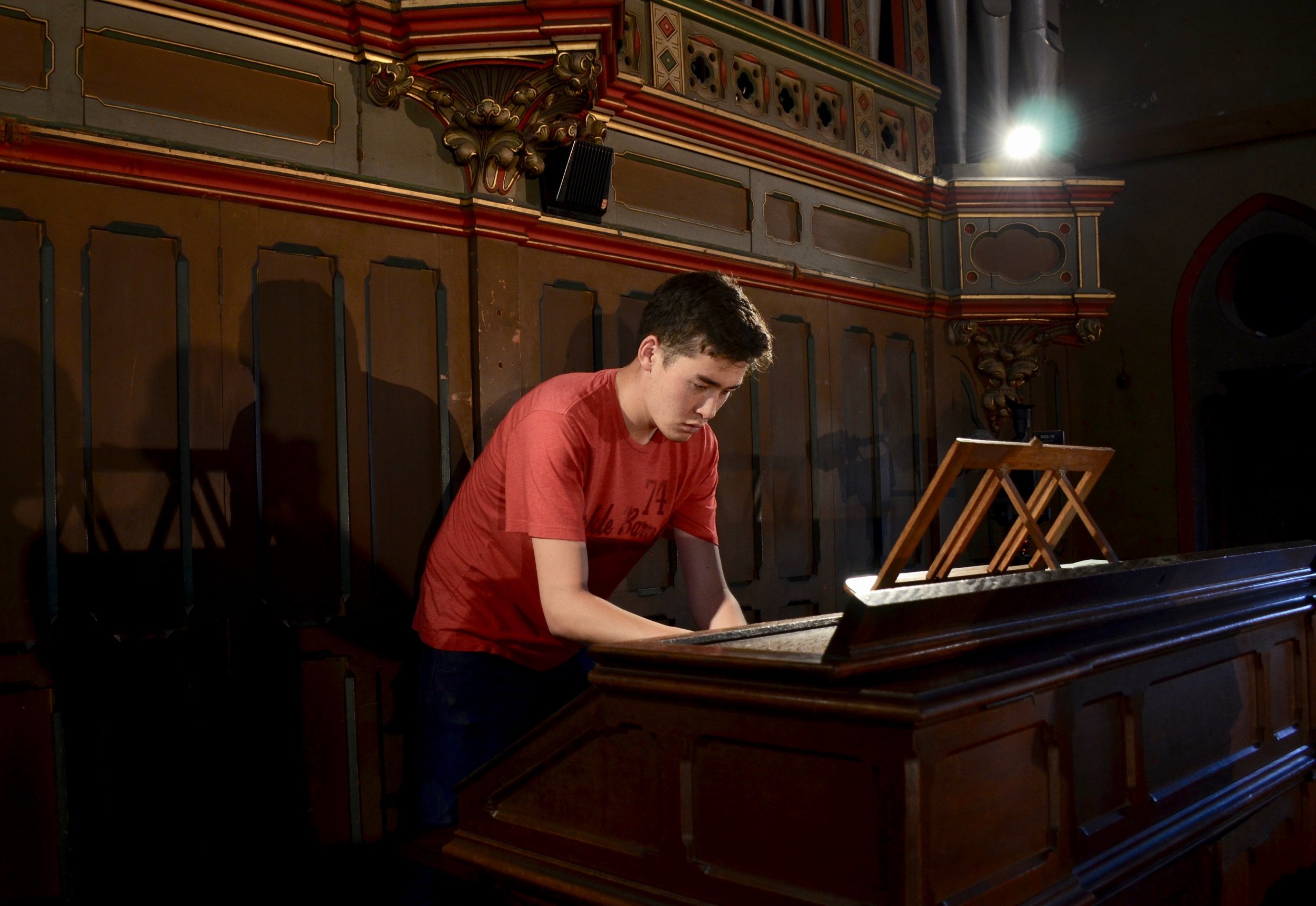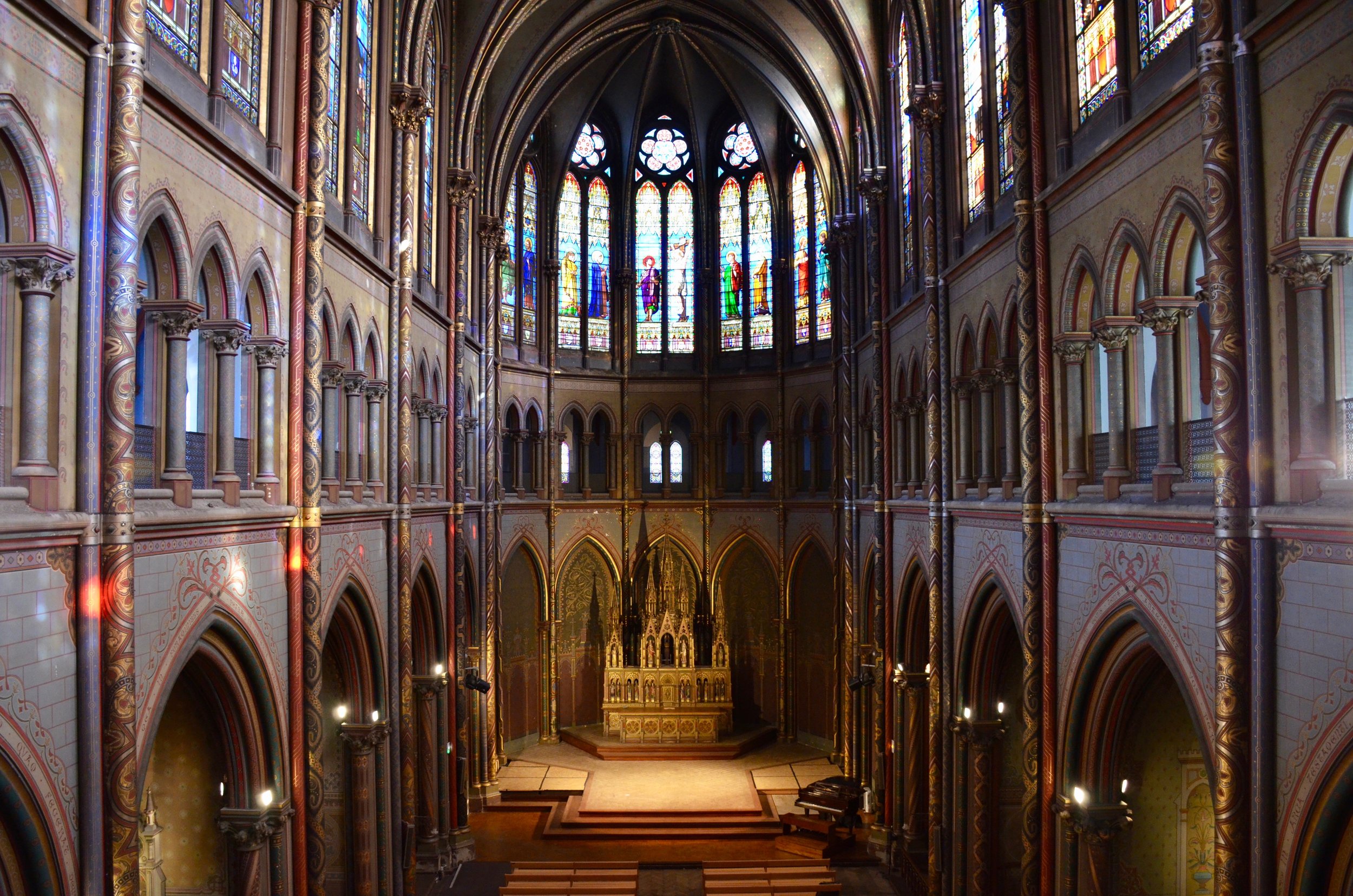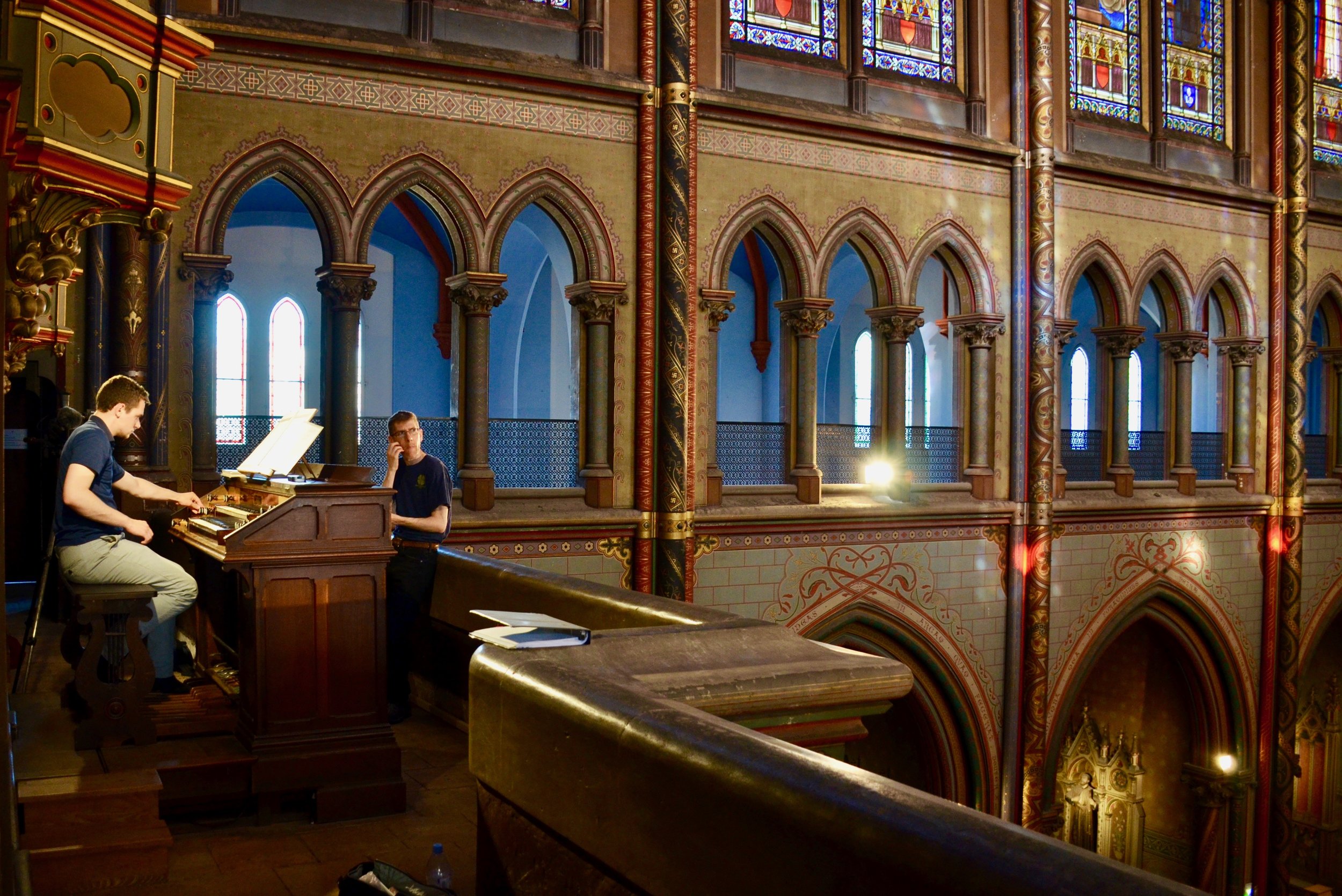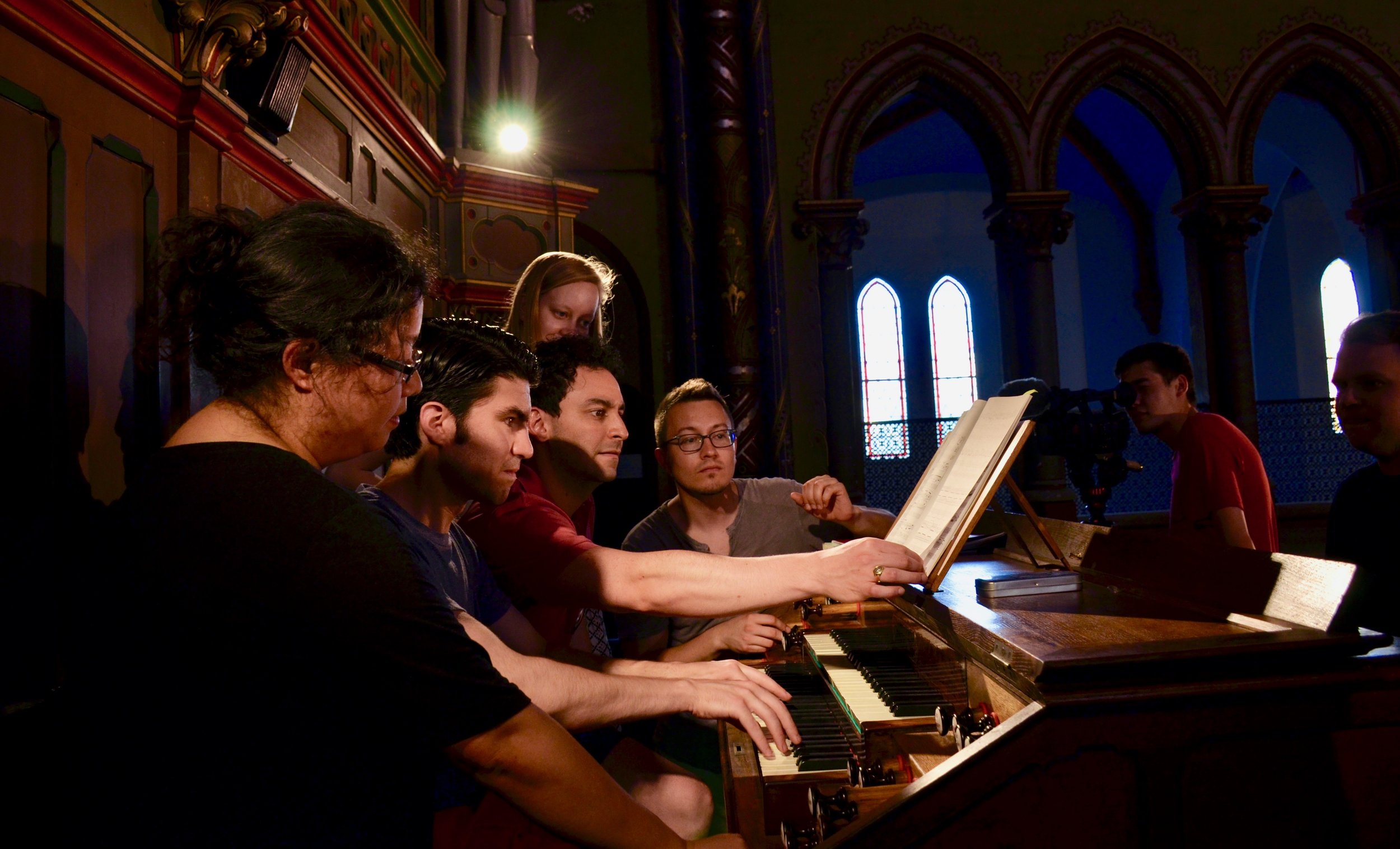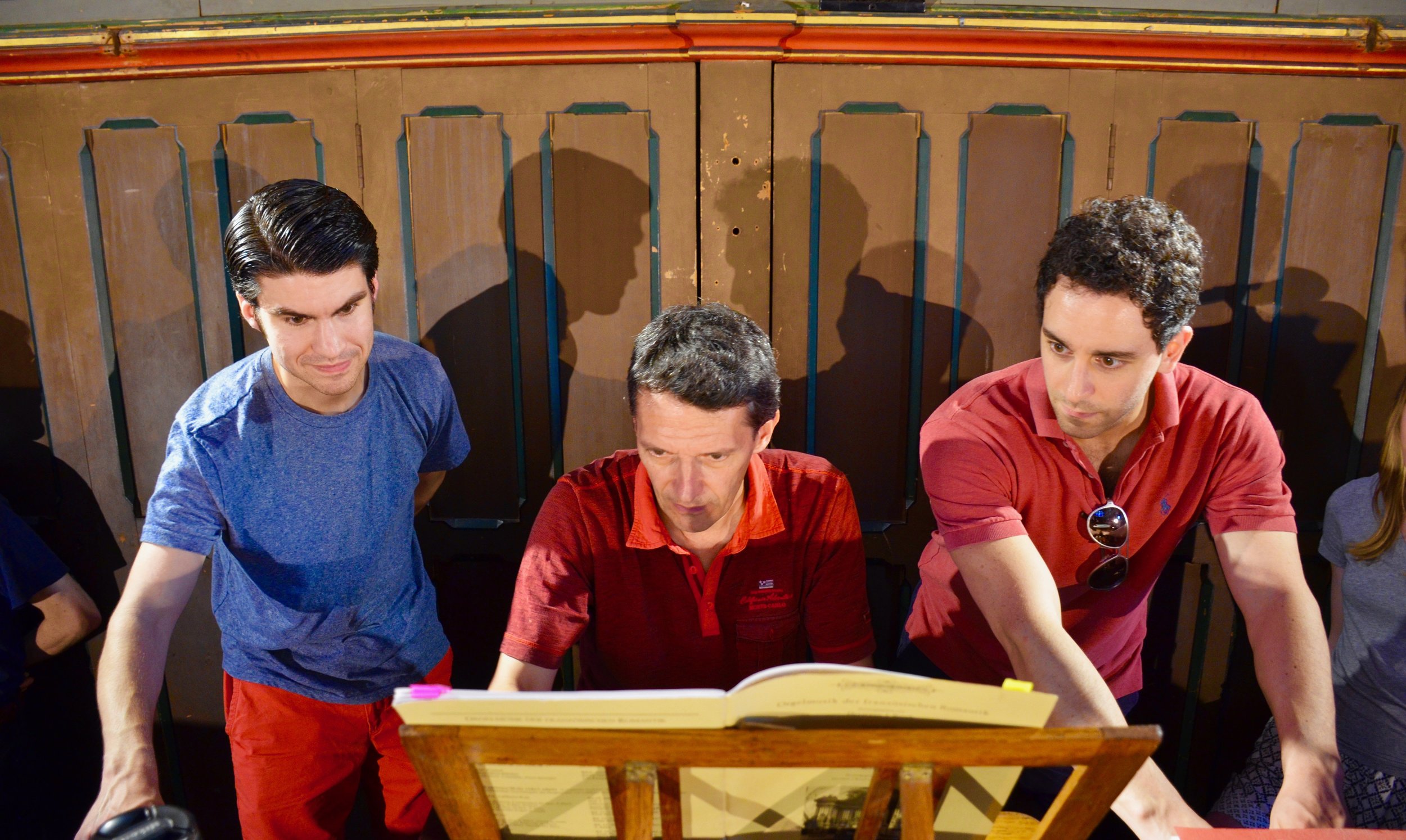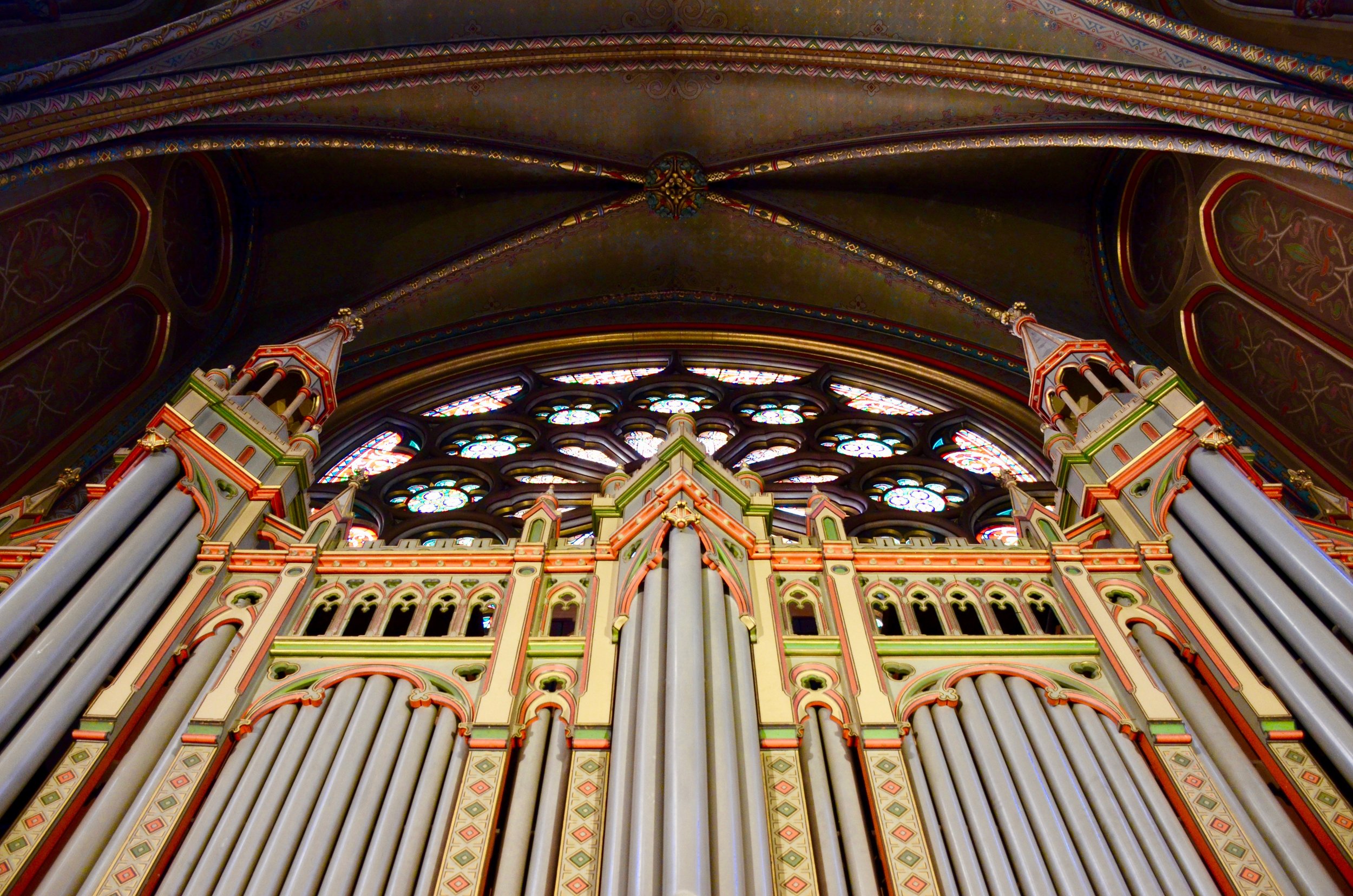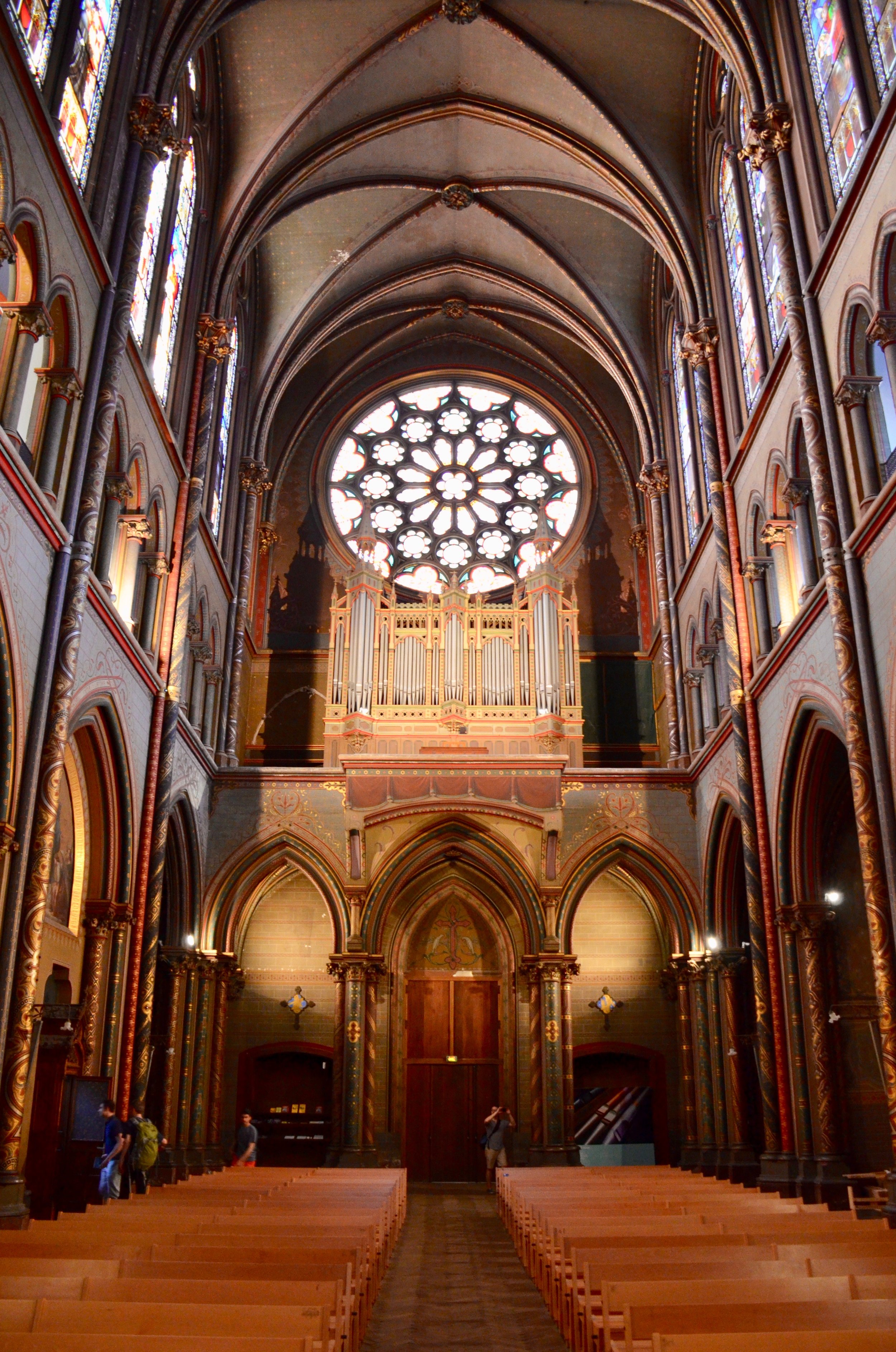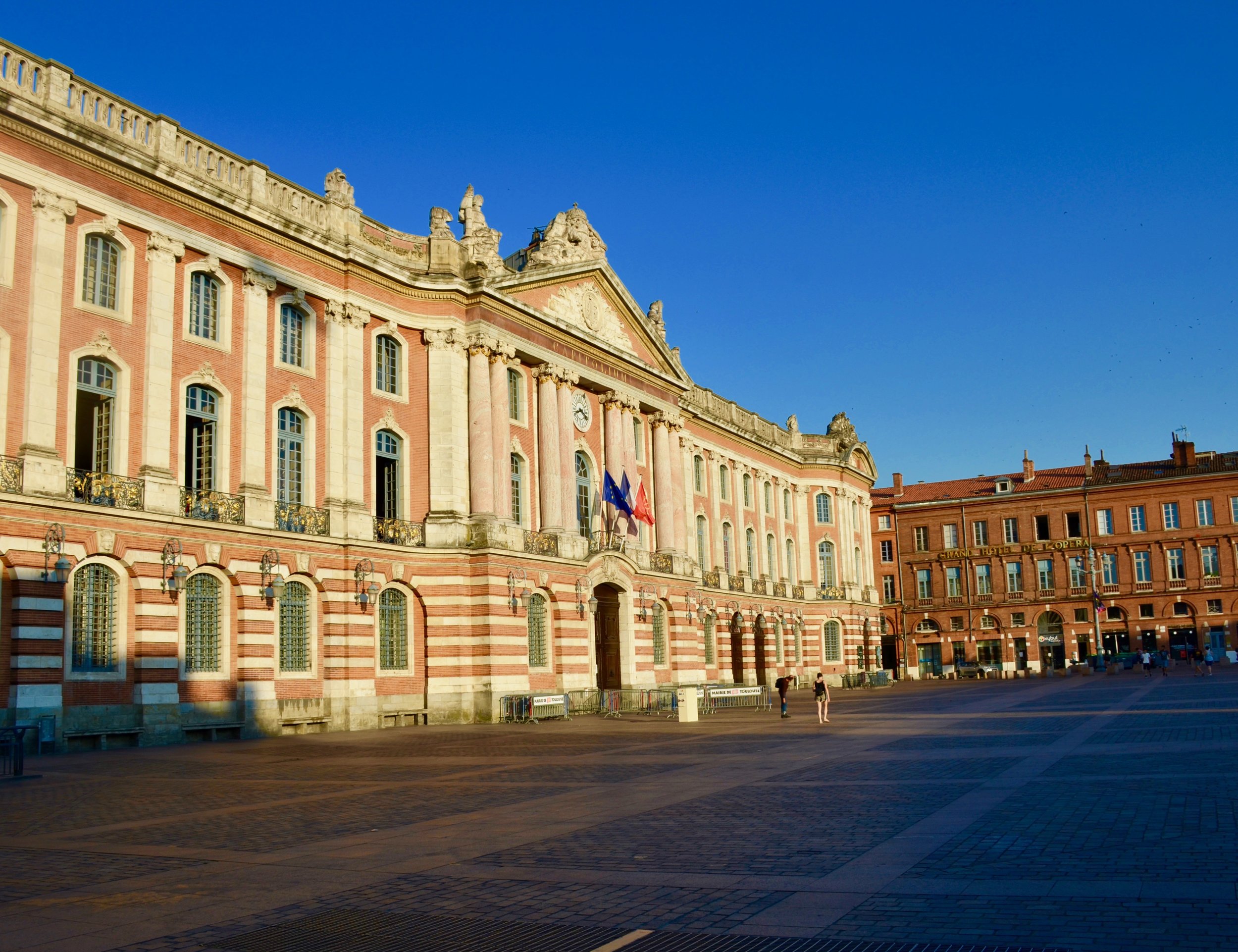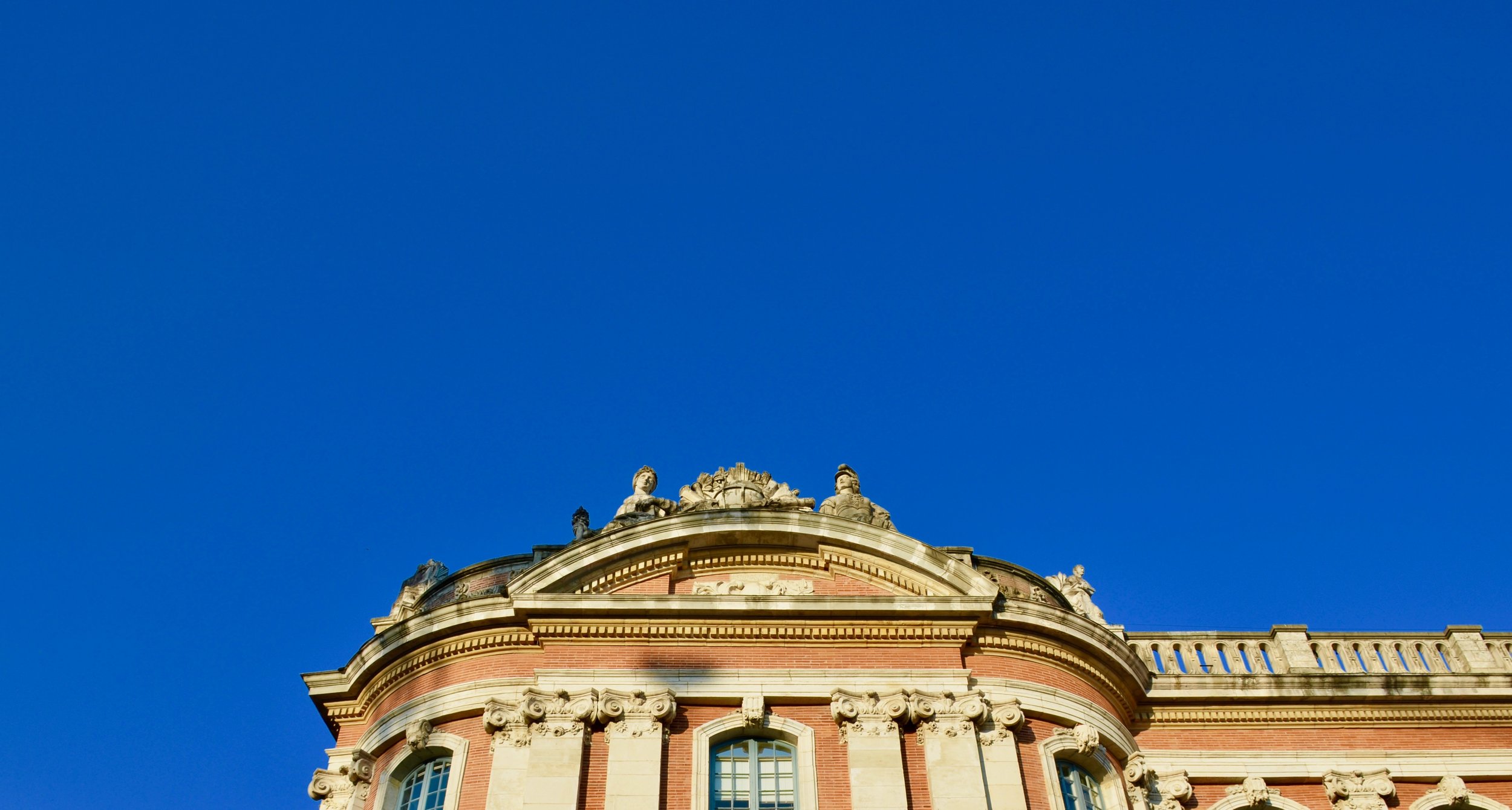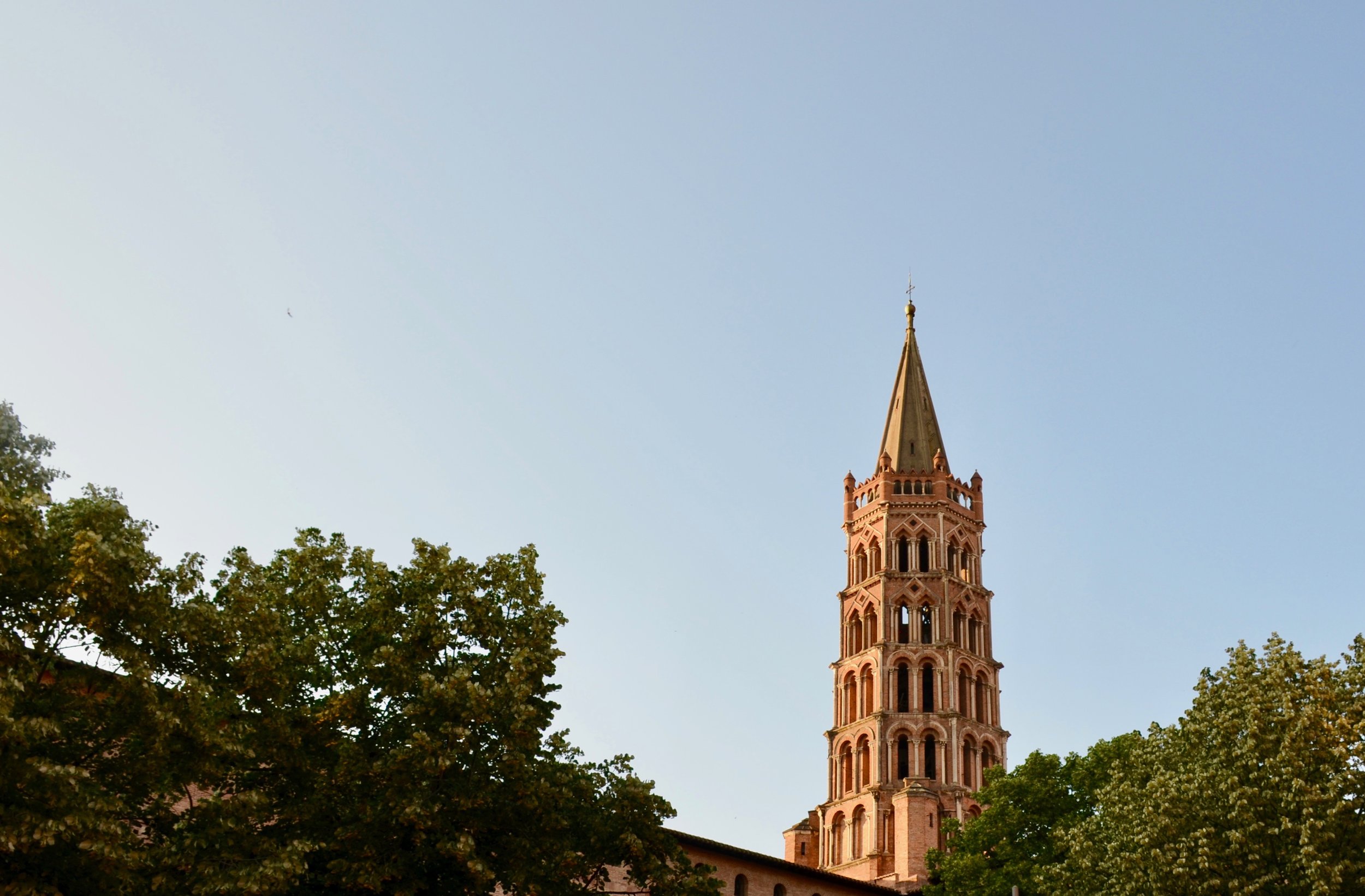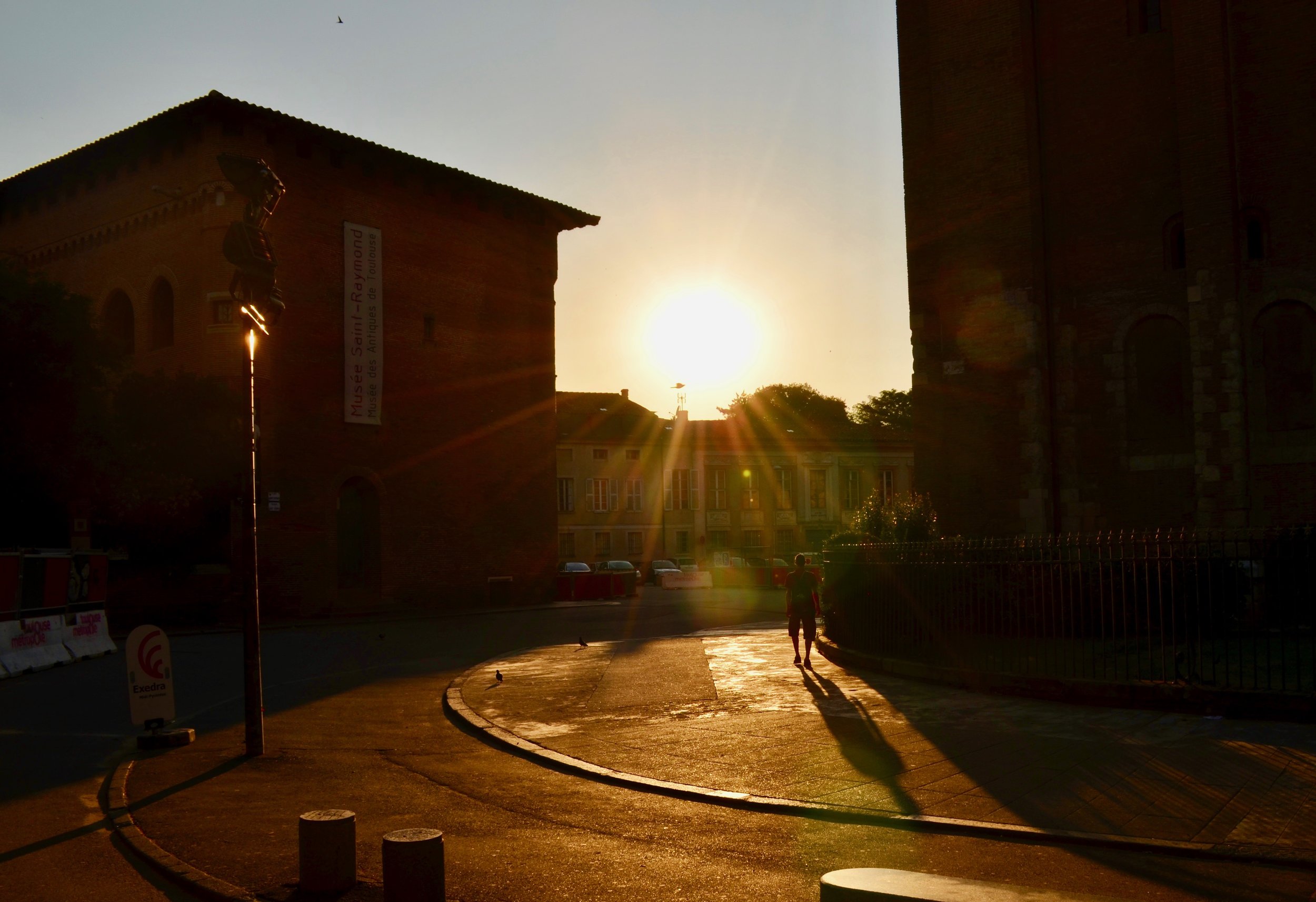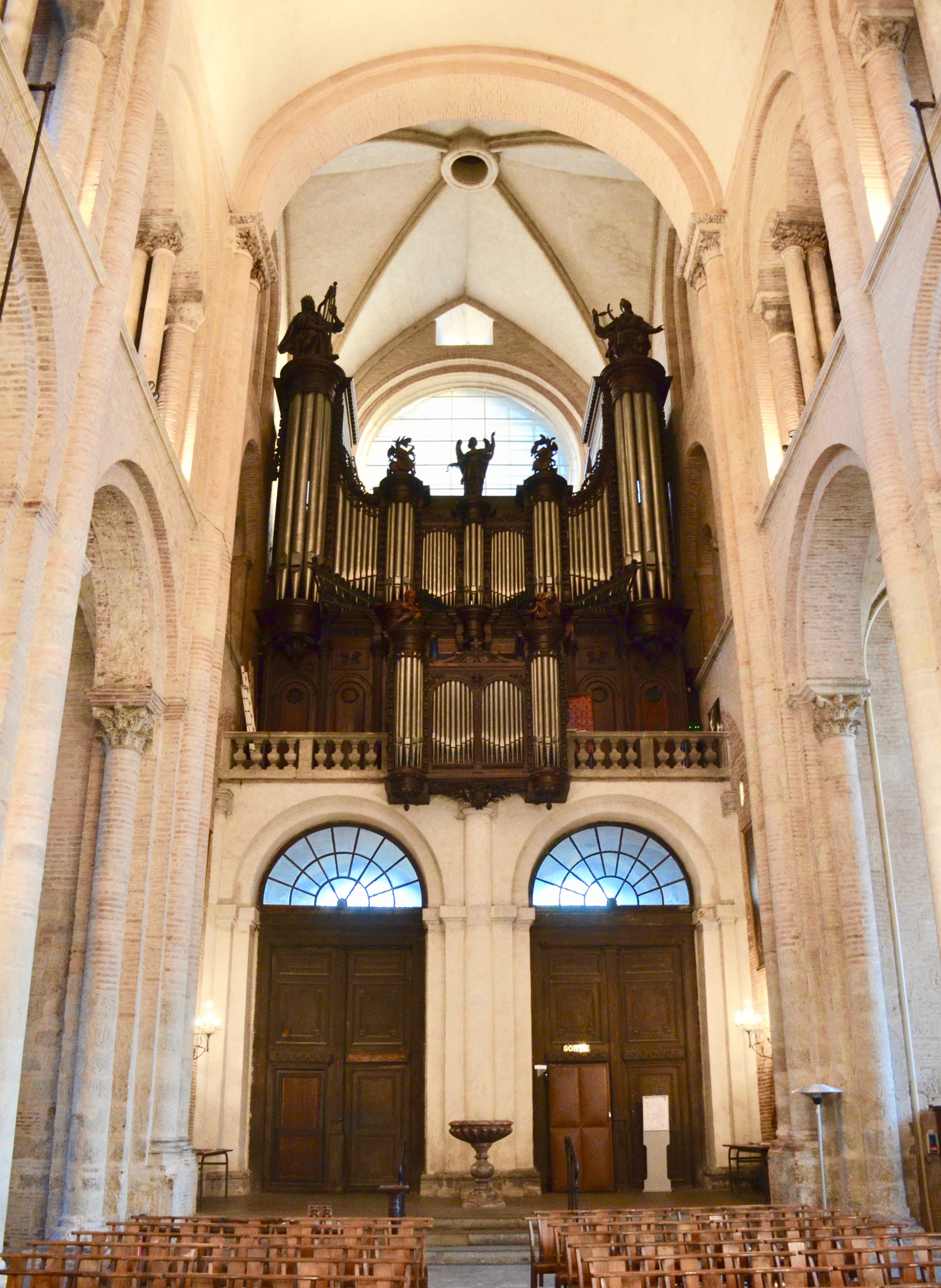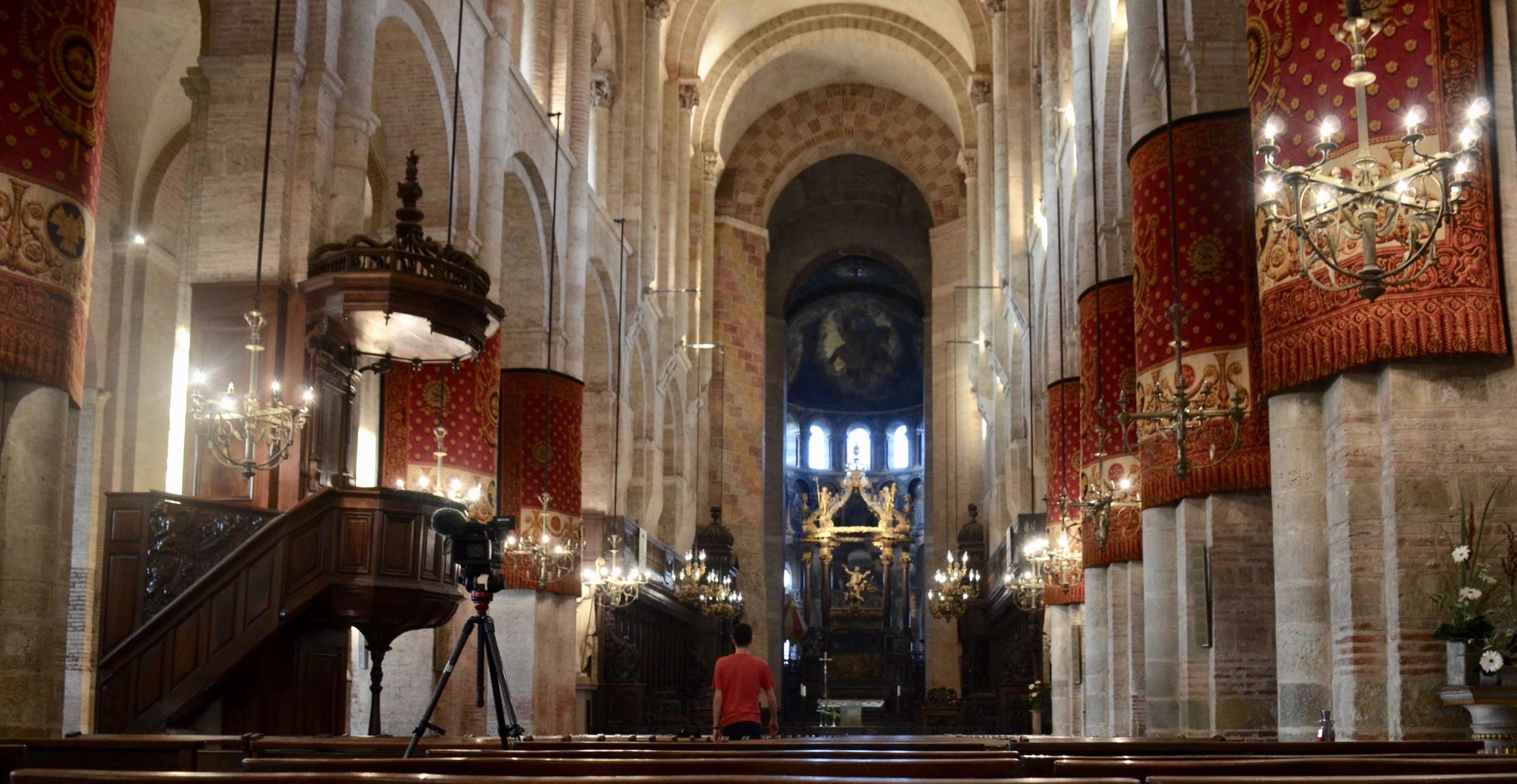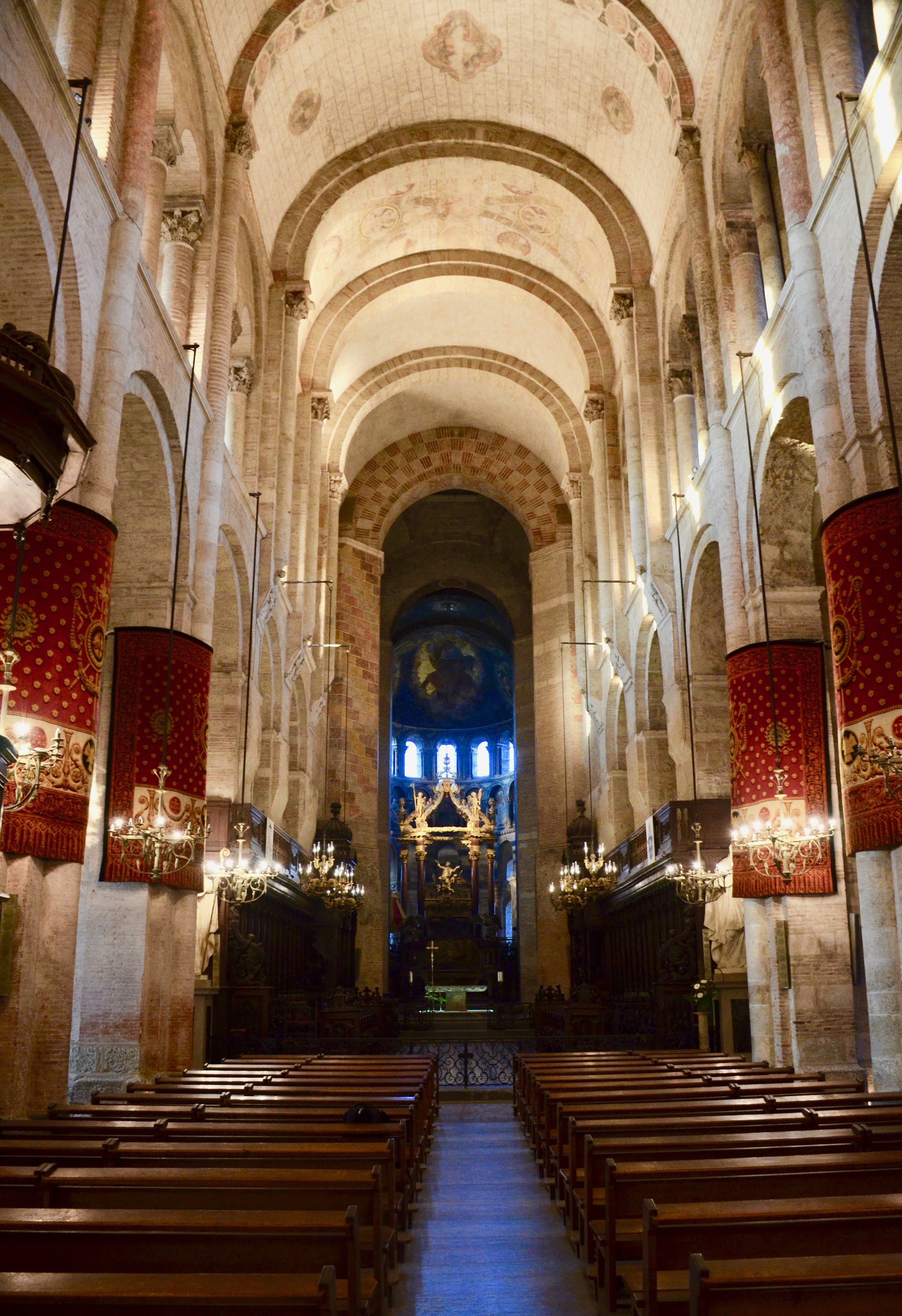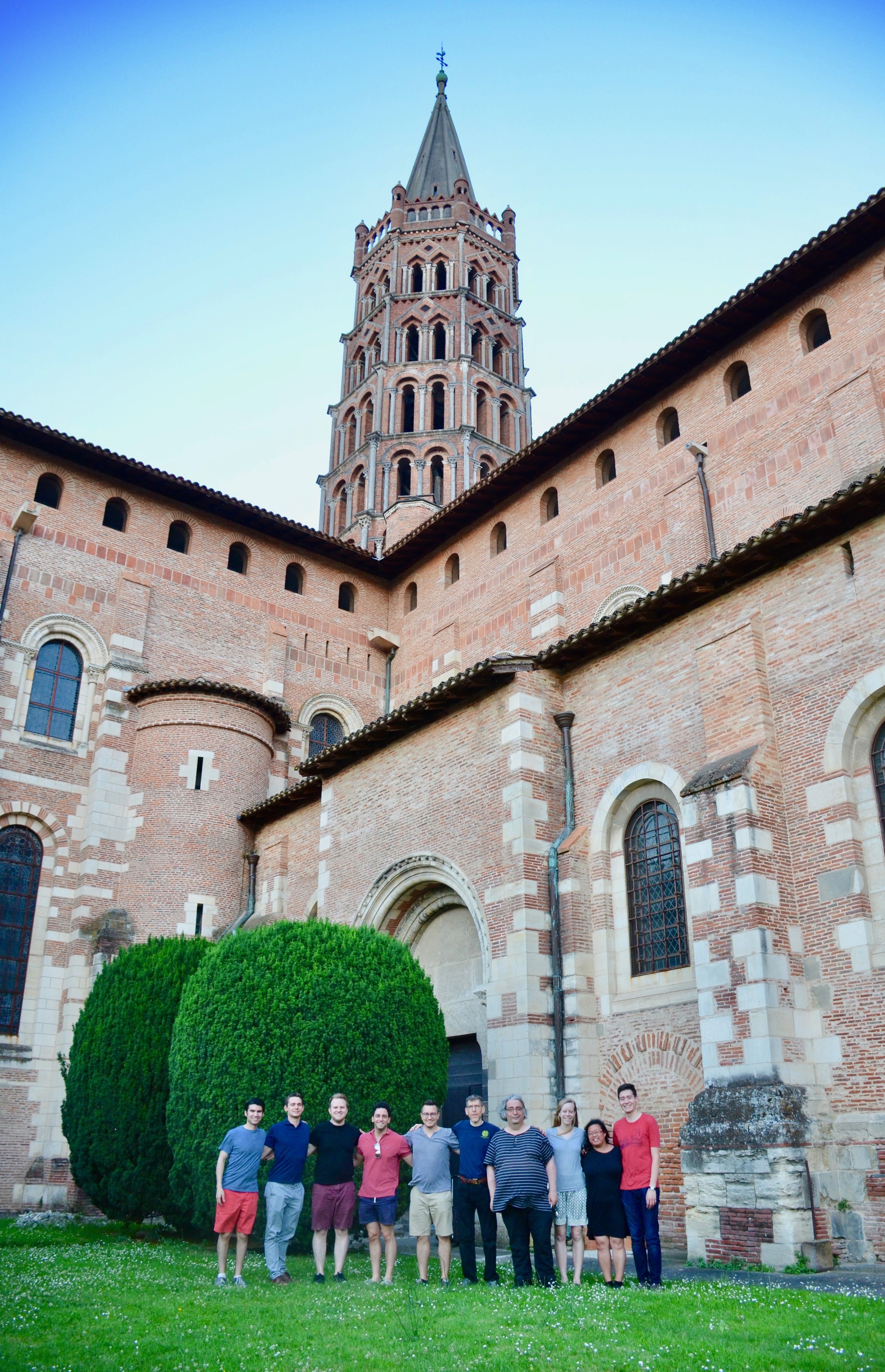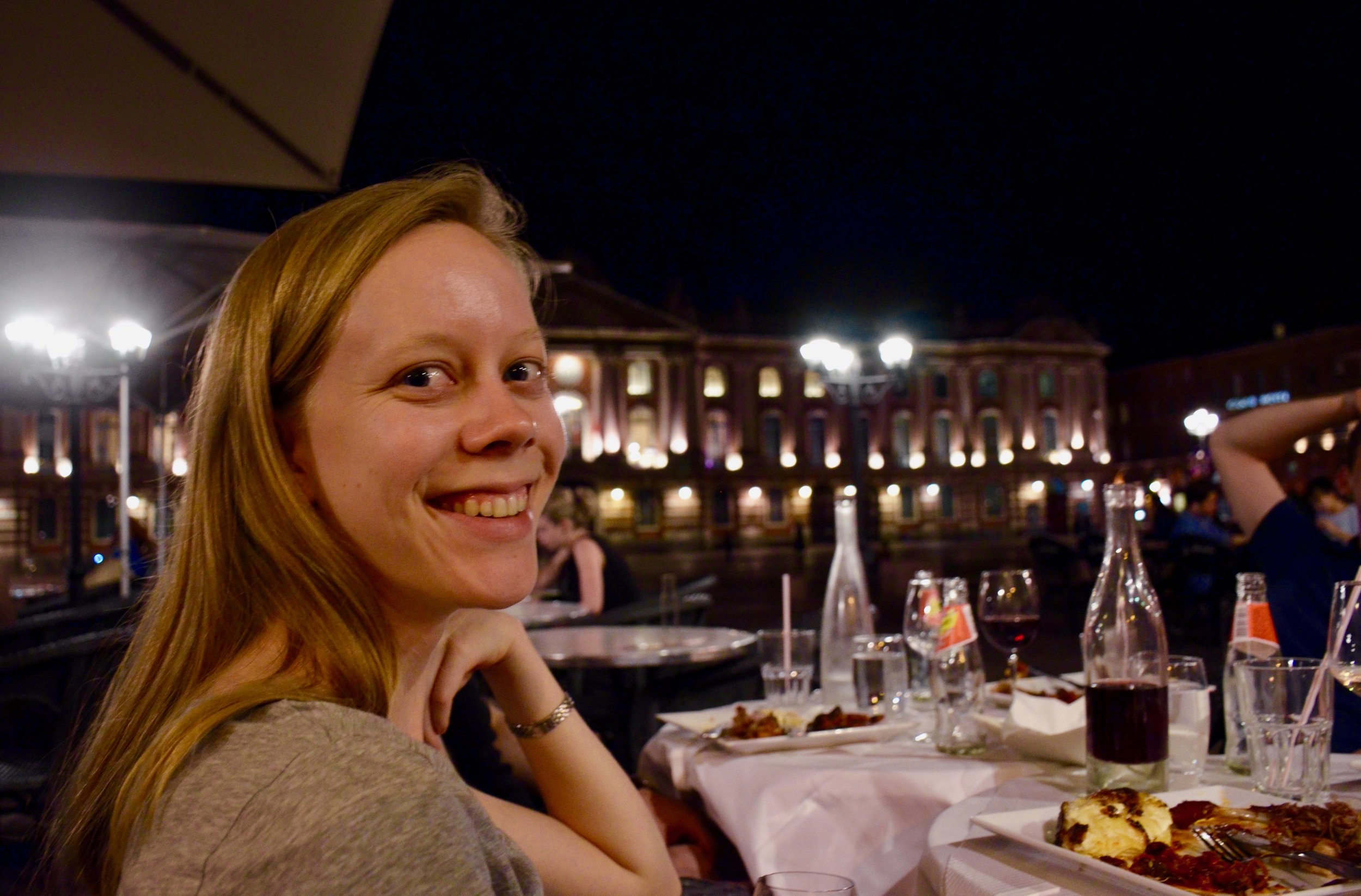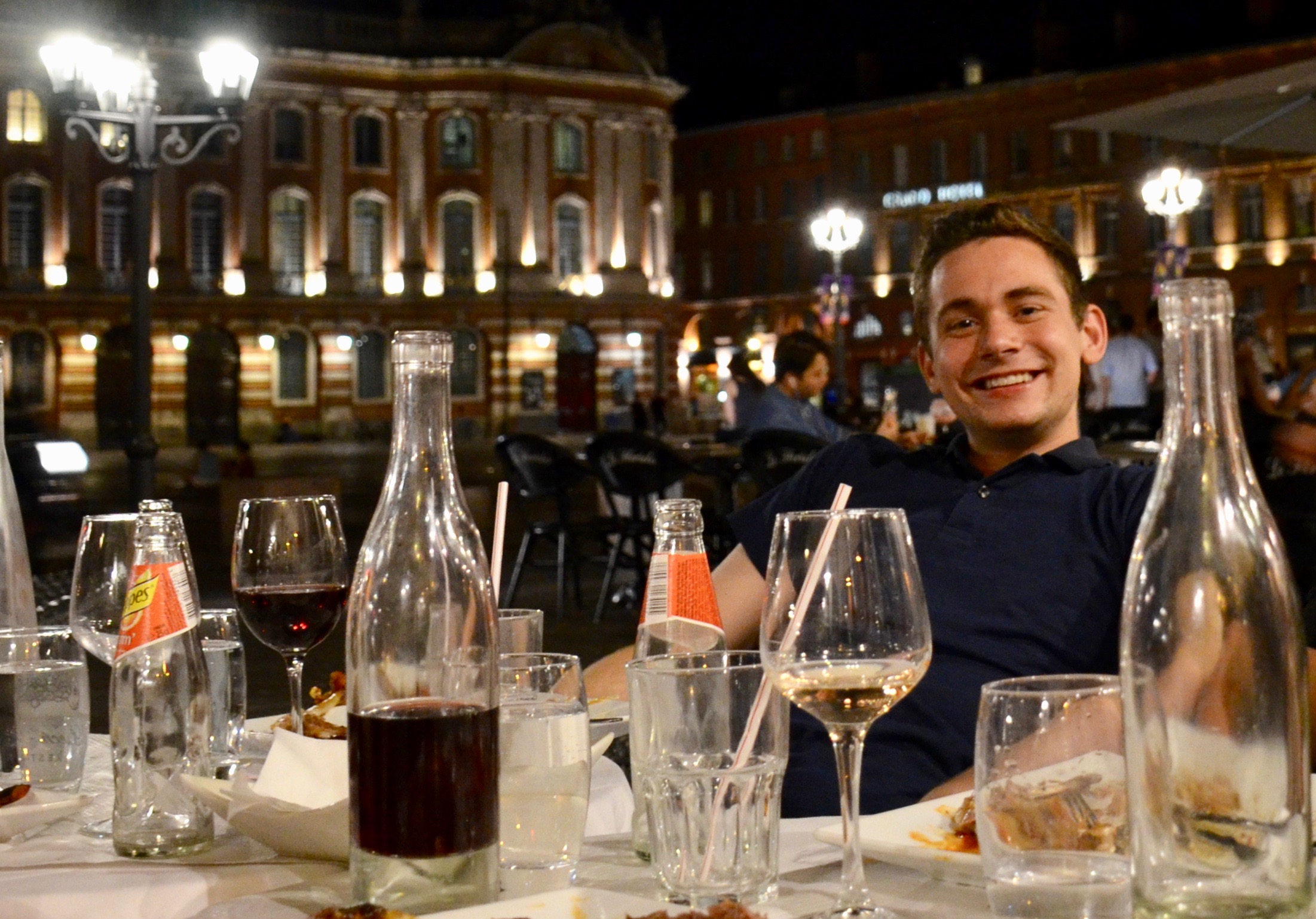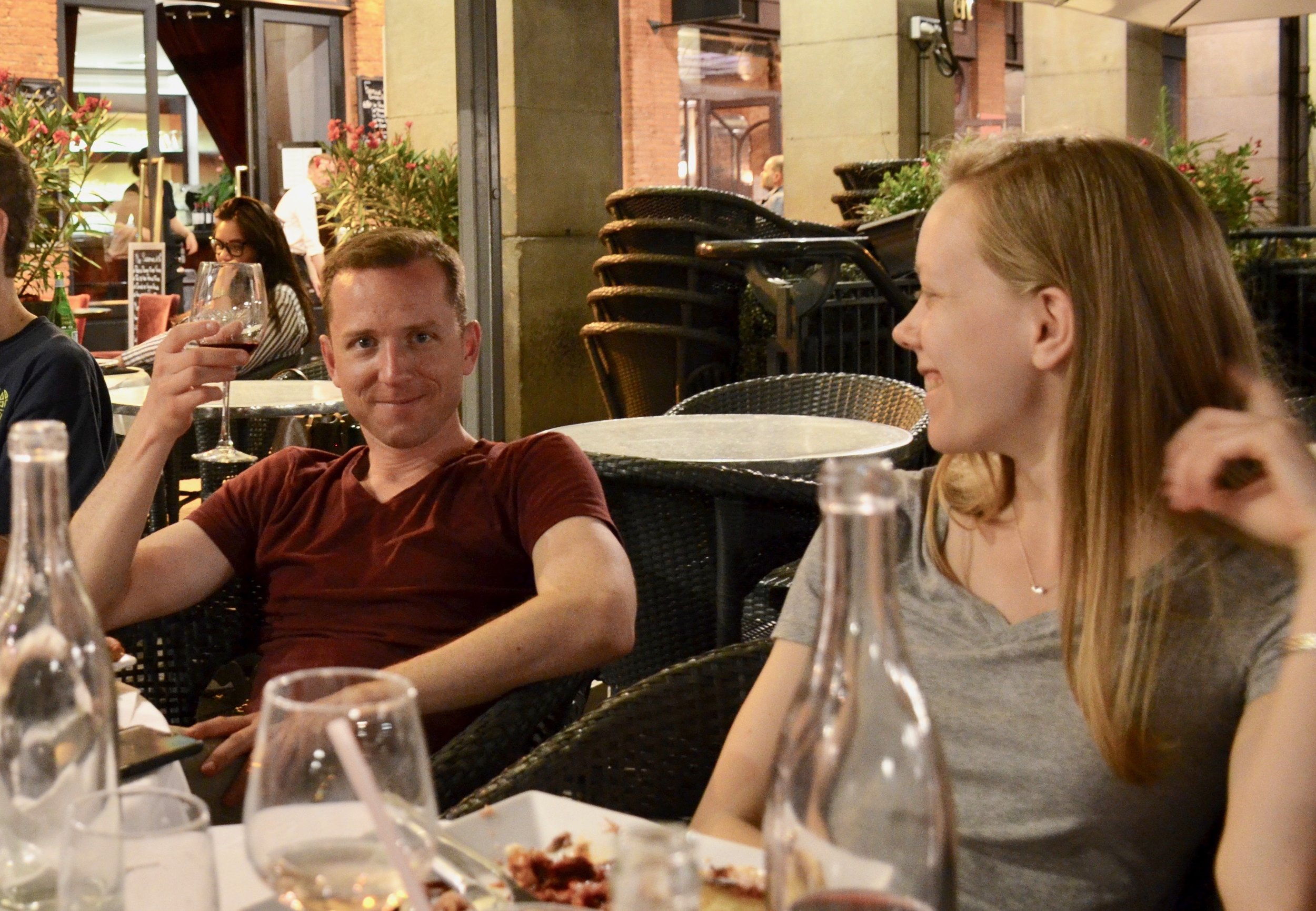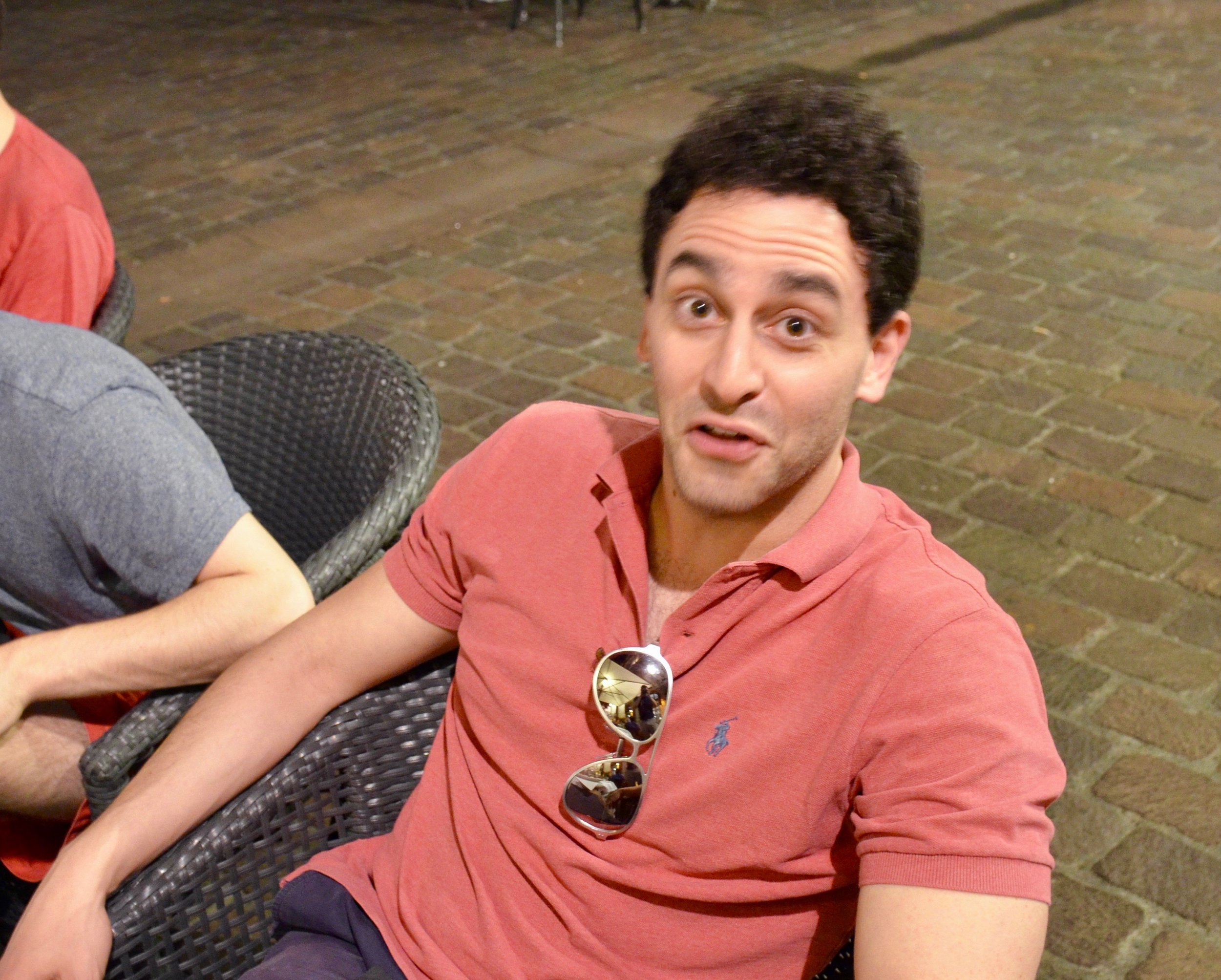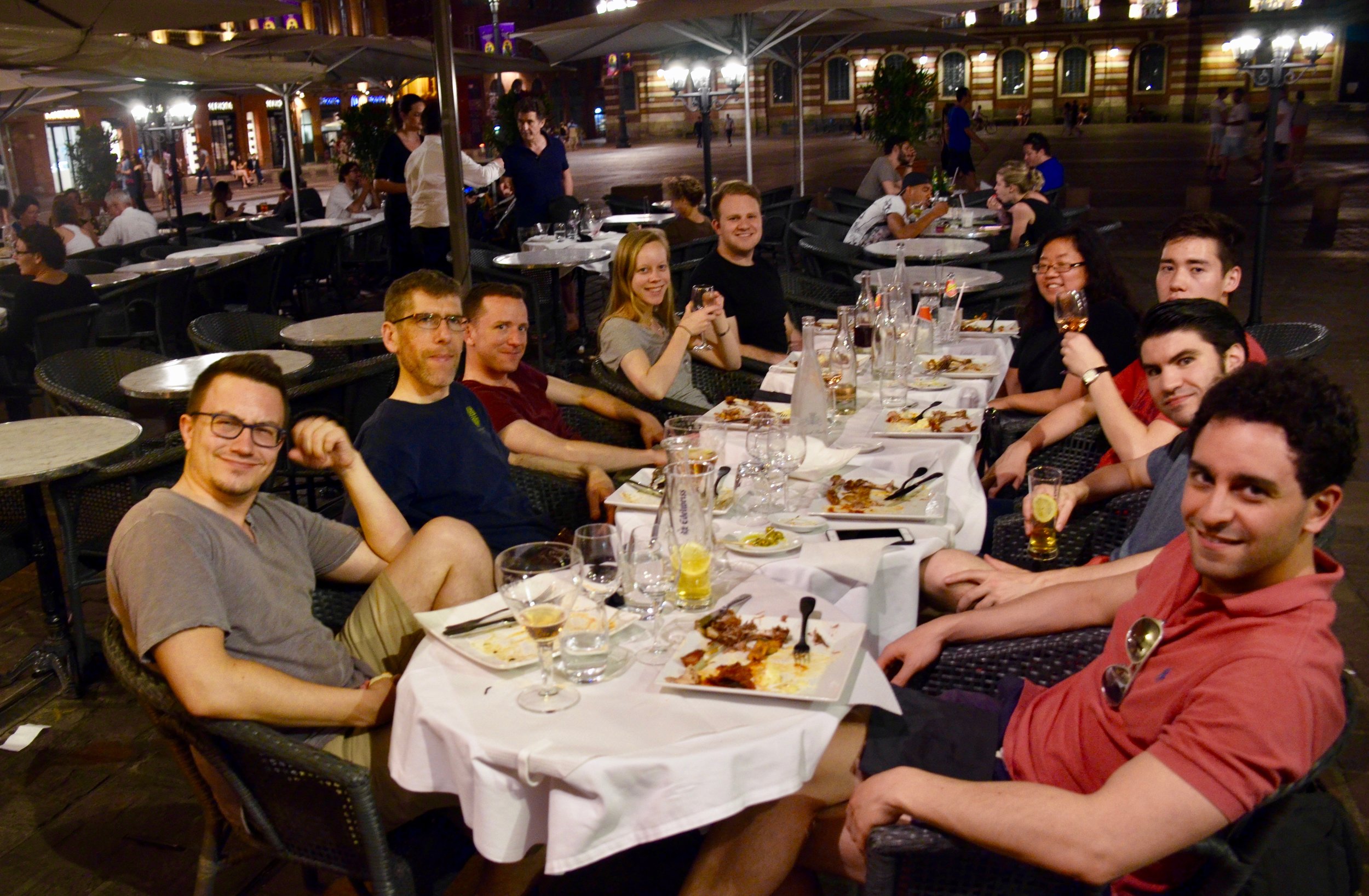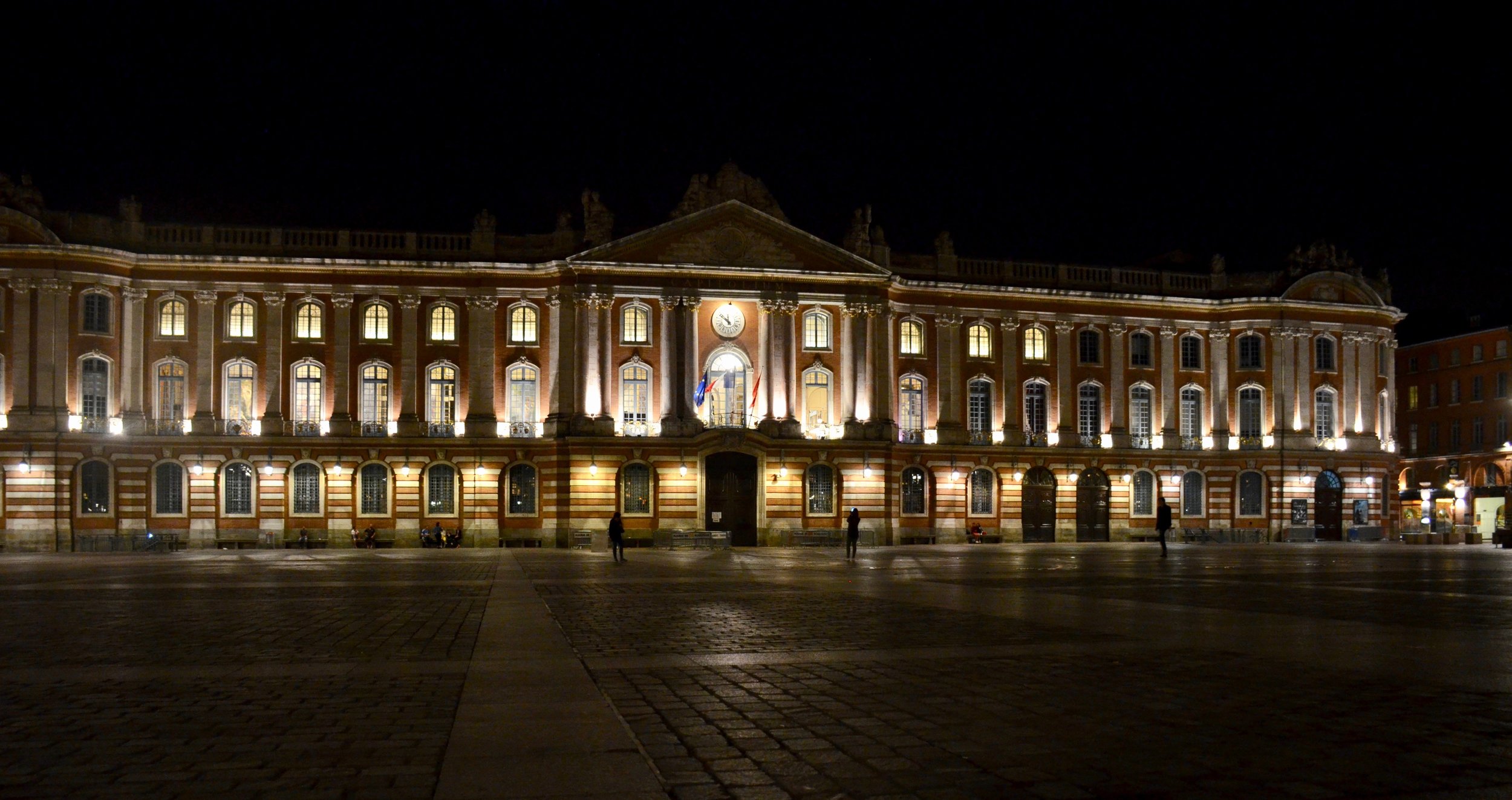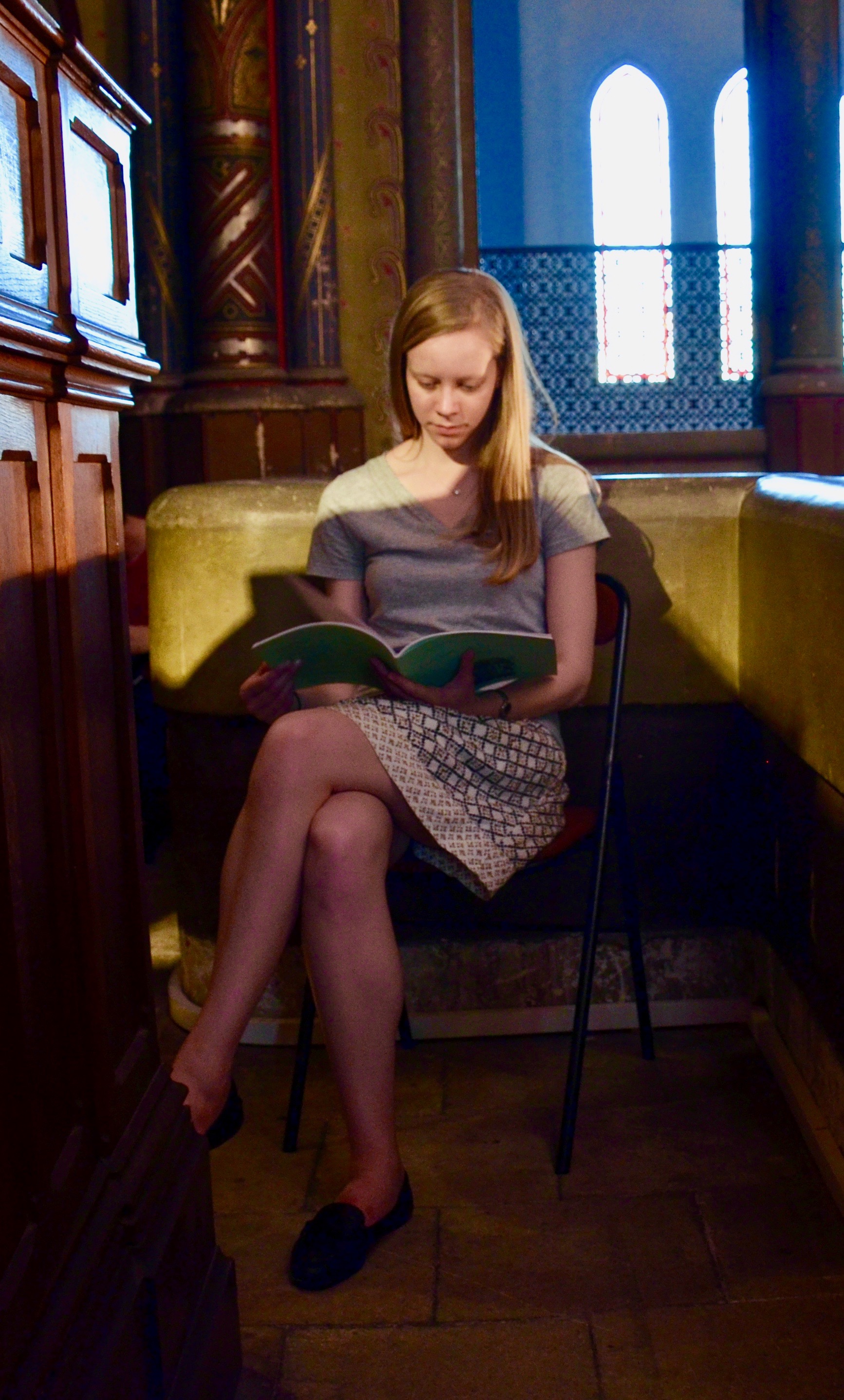Day 8: L’orgue rend-il fou?
by Laura Gullett
Our first full day in Toulouse began for many of us by being awoken by the bright sunshine. Our home has no curtains, so the sun streams into the bedrooms and serves as a natural wake-up call. When I opened my eyes, I was once again stunned by the beauty of our natural surroundings. Our home sits at the crest of a small hill, so we are able to gaze out over a breathtaking vista of farmlands and scattered homes below. Still drowsy from a good night’s rest (and jet lag for me, as I hadn’t joined the trip until the previous day), I wandered outside to find Jennifer and Chris already swimming in the pool. The air was already hot and the pool looked incredibly refreshing, so I too joined them for a dip before breakfast.
Place de la Capitole, Toulouse.
After a delicious breakfast of soft-boiled eggs, baguette, brie, prosciutto, tomato drizzled with olive oil, and espresso from our fancy Nespresso machine, we piled into the cars to head into Toulouse for the day’s visits.
We began at Notre-Dame du Taur, a church nestled between city buildings in the center of Toulouse. As the Toulousian streets are quite narrow and lined with small shops and restaurants, I barely noticed when we happened upon the church. Walking in, I was immediately struck by how the incense from the morning’s mass still hung in the air, lending a sense of etherealness to the room.
The Puget organ of Notre-Dame du Taur, Toulouse.
Jean-Claude Guidarini, the organist of Notre-Dame du Taur of twenty-eight years, greeted us and briefly introduced the French romantic organ, which was built in 1880 by Eugène Puget, the second generation of an organ building family. The organ, which Jean-Claude called his “old lady,” was then restored in 1980. He didn’t need to introduce the organ at length verbally; the organ introduced itself impeccably well as he played an improvisation for us. The organ’s foundations were incredibly rich and full. As the improvisation moved to towards the instrument’s upper ranges, the clear bright tone of the solo ranks shone brilliantly through. As he opened the expression boxes, the reverberations were felt throughout the church, so as it was hard not to feel as if you were truly living in the music. Drawn by the music, passersby wandered into the church and sat down in the pews to listen.
Corey De Tar plays the organ of Notre Dame du Taur, with Jean-Claude Guidarini and Christian Lane looking on.
We each took our turns on the instrument, playing our favorite Vierne, Widor, and Duruflé. Registering each piece was remarkably easy. As Chris said, “It is nice to play French music when all you have to do for registration is to pull out what it says on the page.” Furthermore, at the risk of sounding cliché, the organ almost seemed as if it was yearning for us to breathe life into it. Each piece, whether it be a grand toccata or soft and lyrical, filled the room with incredibly lush music.
Three hours quickly passed with all of us in a state of bliss listening to the wonderful instrument. Walking out the door, many of us agreed that if we were to take an organ home from the trip, this would be our organ of choice. It had been incredibly satisfying to play.
We then walked across the city to the Gésu Église. As it was in the mid-nineties outdoor and the heat seemed relentless, we were all relieved to be ushered inside by Yves, our host at Gésu, into the cool church.
Yves Rechsteiner, executive director of Toulouse Les Orgues, introducing us to the Gésu Church.
Gésu is no longer an operational church. About twenty-five years ago, the city of Toulouse bought the building (and the organ inside) for 1 Euro in order to preserve the building from demolition. Today, Gésu is utilized for concerts and other city events. One of the most prominent of these events is Toulouse Les Orgues, an annual festival of organ concerts in Toulouse. Yves took over as artistic director of this festival from Michel Bouvard and Jan Willem Jansen, who were its original founders. Yves explained to us that 90% of the festival is traditional classical music, while the remaining 10% is very forward-thinking and creative—one year they set up a trapeze, tight rope, and pole (yes, for pole dancing) in the church for circus performances set to organ music. The festival also hosts educational programming for children. In order to teach the children about the organ’s mechanics, Gésu has nine mini-organs of one rank each, made so that one child pumps the bellows while another hits color-coded keys similar to those of a carillon. We had a great time improvising on these mini-organs, especially on the one whose pipes made a sound very reminiscent of a farting noise.
David von Behren performing a pedal-piano work of Schumann in the Gésu Church, Toulouse.
Gésu also contains a pedal piano, which many of us had never seen before. A pedal piano has a pedal keyboard, just like the organ’s, but instead of trackers connected to a set of pipes, has a set of piano strings below the pedal keys. We found it much more difficult to play than initially anticipated, as it was very difficult to get the pedals to sound at a dynamic consistent with that of what one was playing with his/her hands. Gésu’s pedal piano is an original Pleyel from 1890, which Yves found online on a Craigslist-type site for 5,000 Euros. Schumann wrote six canons and six B-A-C-H fugues for this type of instrument. Accordingly, David played Schumann’s B Major Canon (Op. 56, No.6).
Yves Rechsteiner demonstrating the Cavaillé-Coll instrument in the Gésu Church, Toulouse.
We then headed upstairs to play the Gésu’s 1863 romantic organ. The organ is a simple, easily reproducible design that made it cost-effective to have a standard chapel, Cavaillé-Coll instrument. It was cost effective in part because the bottom octave of the swell division is left off, as is half of the standard pedal division. This saved a sizeable amount of money and space due to the absence of many large pipes, making a romantic instrument economical. Although not suited to the typical French romantic music we are most accustomed to playing, the slightly earlier music of Léfebure-Wely (1817-1869) is very well suited here. While we took turns playing, Yves offered us some delicious beer that we drank together on the church’s balcony while perusing the publicity materials for Toulouse Les Orgues. To support and convey their creative circus programming, Toulouse Les Orgues makes a concerted effort to develop marketing materials reflecting that they are not hosting a boring, humdrum festival. The 2017 festival’s theme will be, “L’orgue rend-il fou?” or in English, “Does the organ drive you mad?” I can safely say that we are each in this target audience—the organ definitely drives us all mad, in (mostly) great ways!
The Cavaillé-Coll organ in St-Sernin, Toulouse.
We then said goodbye to Yves, who we would see later in the week once more. We then walked to our last stop of the day, Saint-Sernin. Alongside St. Ouen in Rouen, which we visited earlier in the trip, the organ of Saint-Sernin is considered one of the best preserved Cavaillé-Coll organs. It was first restored in 1996, but many in Toulouse feel that its sound changed post-restoration. As a result, it is being restored once more currently. To our luck, the restoration is ahead of schedule, and Jean-Claude was able to improvise on the organ to demonstrate the organ’s transformative sound. Its reed chorus was one of the most thrilling we have ever heard. We will all have to come back in future years, once the restoration is entirely complete, so that we can have our turn on the bench of this incredible instrument.
Boston Organ Studio members enjoy dinner on the square in Toulouse.
Upon leaving Saint-Sernin, we wandered once more through the streets of Toulouse towards the central Capitol Square. There, we found an outdoor café to sit and enjoy the cooler evening air. To celebrate our arrival in Toulouse, many of us ate duck confit and foie gras, two specialties of this region in southern France. Once we all had had our fill, we drove back home to Le Carla and capped the evening off with a nighttime swim. Satisfied by the day’s music, food, and swimming, we soon after crawled into bed and fell asleep.
